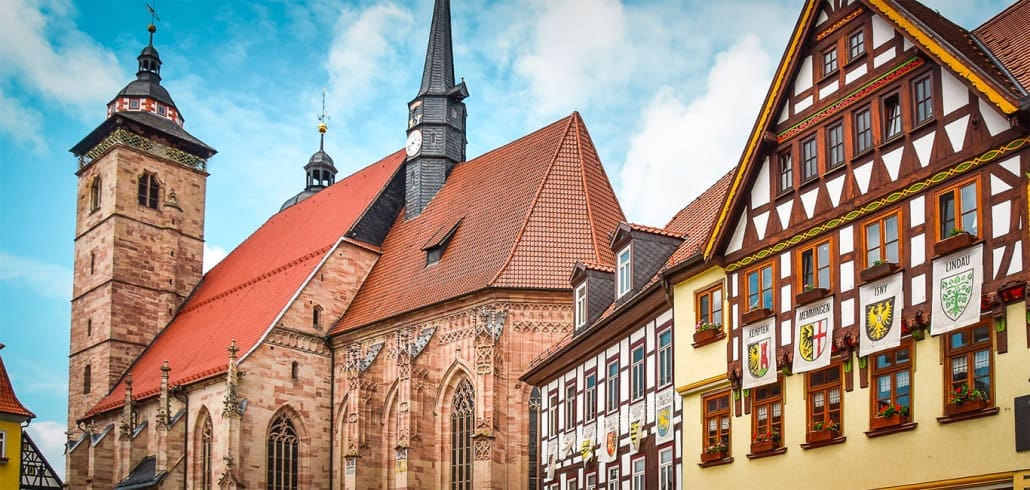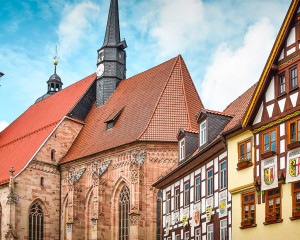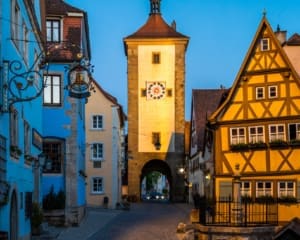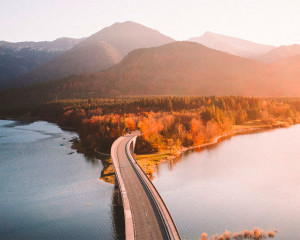Sights in Schmalkalden - explore Thuringia's beautiful south-west on a weekend
Thuringia comes to mind: grilled sausage, Wartburg Castle, Goethe. But the Free State is so large that it is worth taking a closer look at it. We spent three days in the southwest - more precisely in the Schmalkalden-Meiningen region - and can already say that there is a lot to see, climb and eat! Let's go …
Bordering on Bavaria and Hesse, Schmalkalden-Meinigen stretches from the Rhön to the Werra branch of the Weser. Here we focus on the small town of Schmalkalden, which is bursting with architecture, history, culture and nature, and its surroundings.
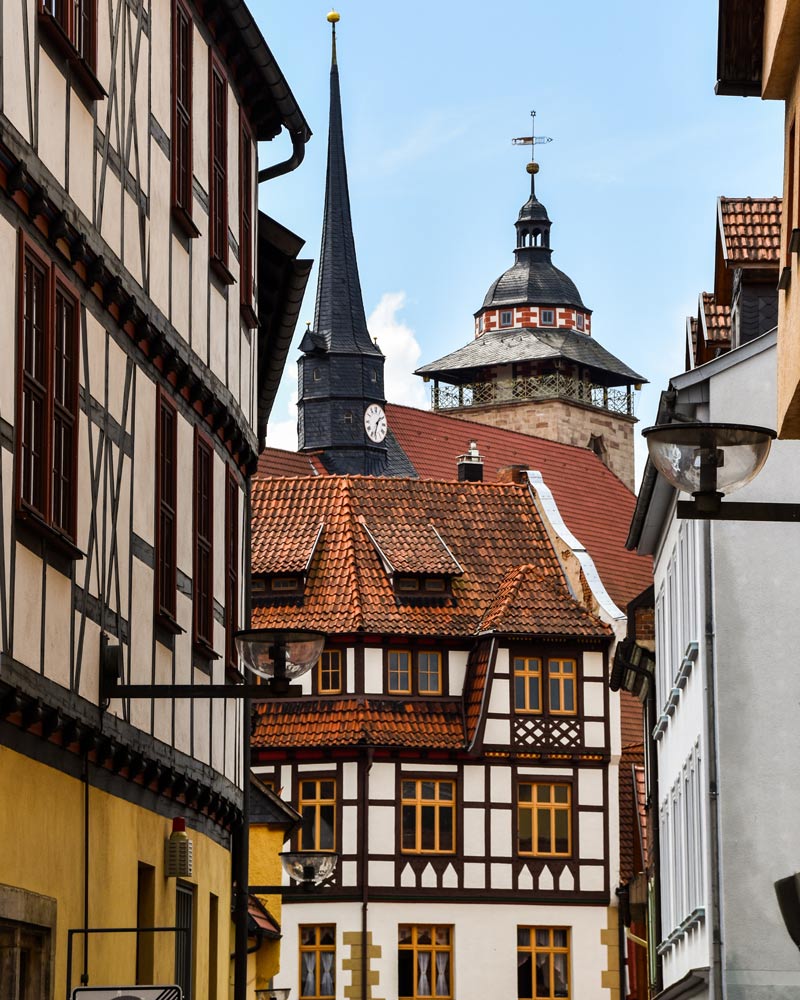
Street art & culture
Half-timbered houses, castles, churches and fortresses … and modern street art! Like this bat by street artist ROA.Half-timbered houses, castles, churches and fortresses ... and modern street art! Like this bat by street artist ROA.
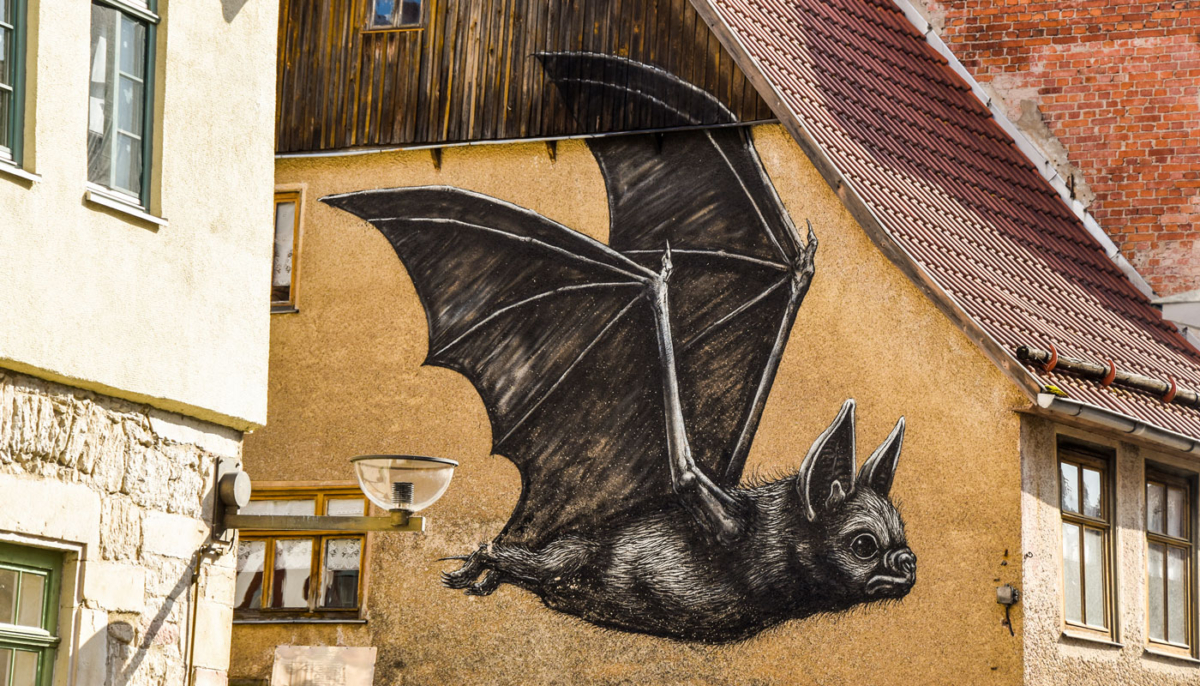
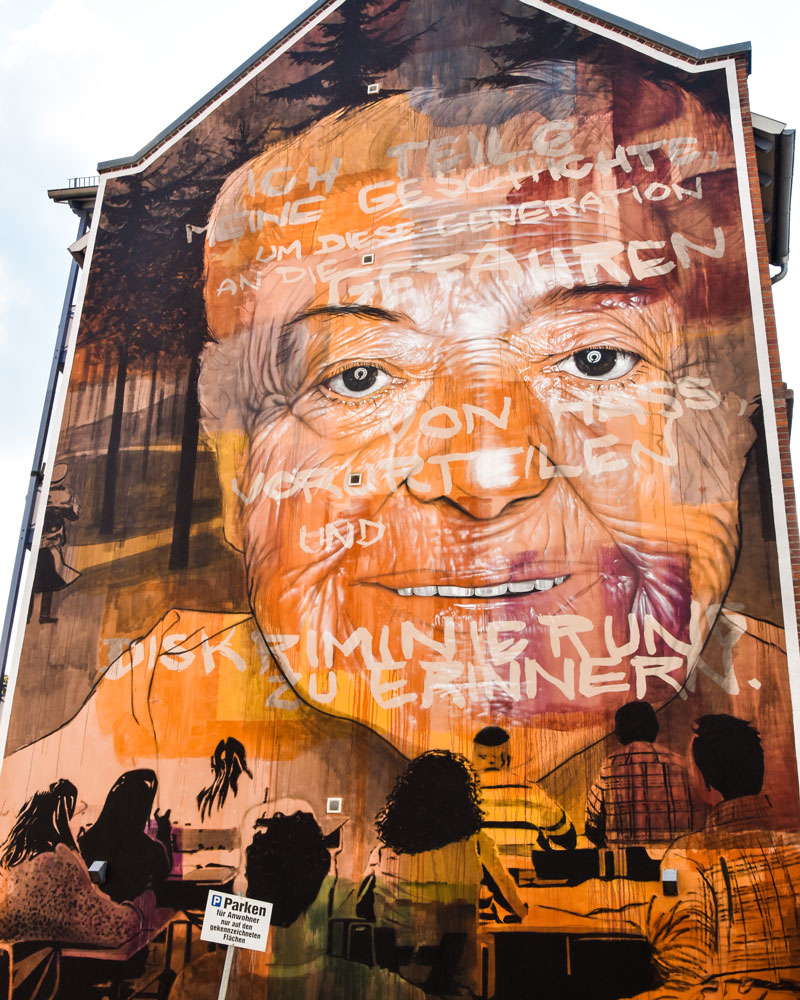
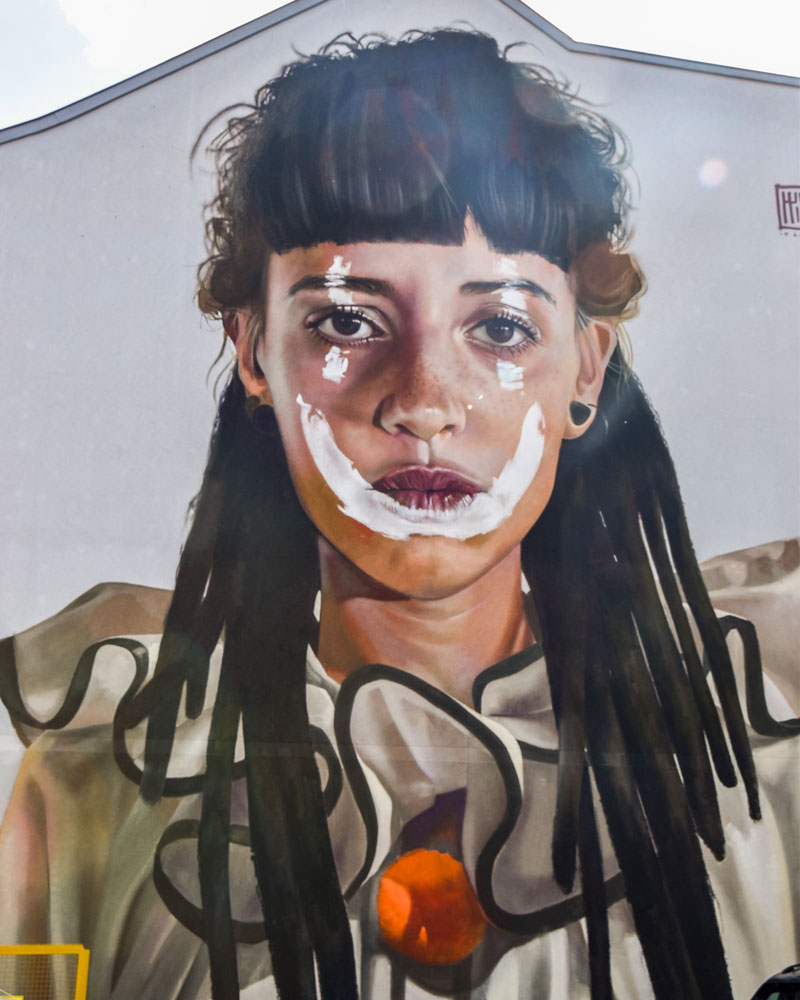
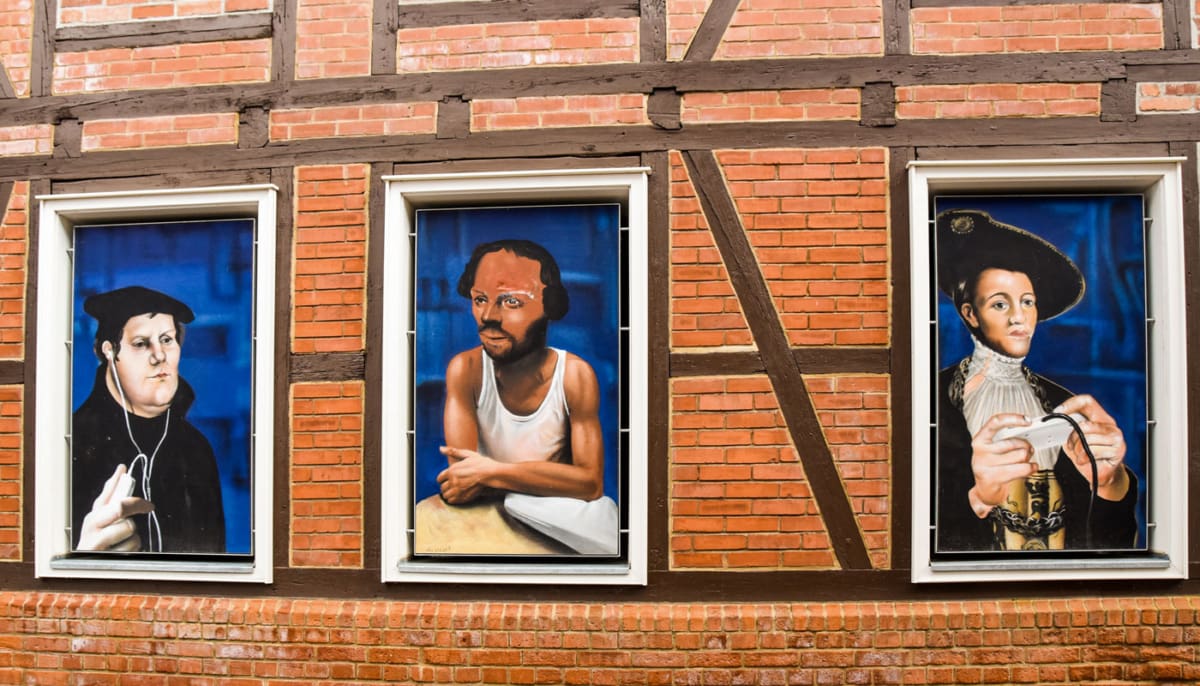
Beautiful half-timbered houses
We notice the beautiful timbered houses within the first few hundred meters. The town is part of the so-called "half-timbered road", with small and large, sometimes stately and sometimes little crooked buildings jutting out into the small, extremely well-kept streets.
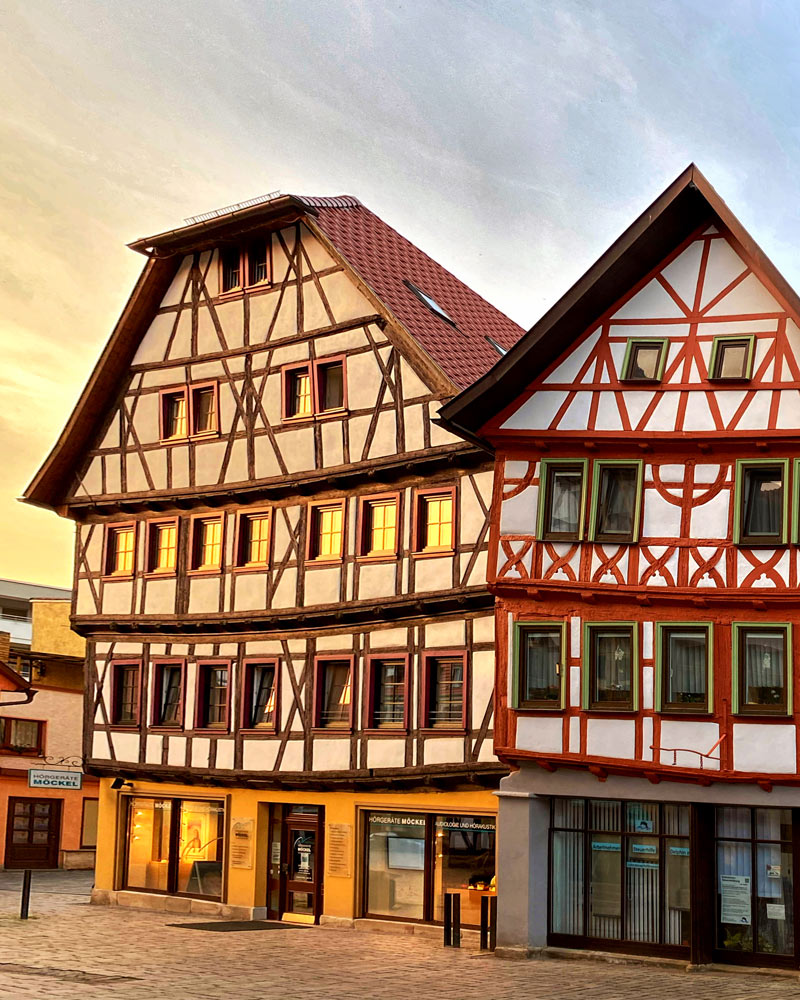
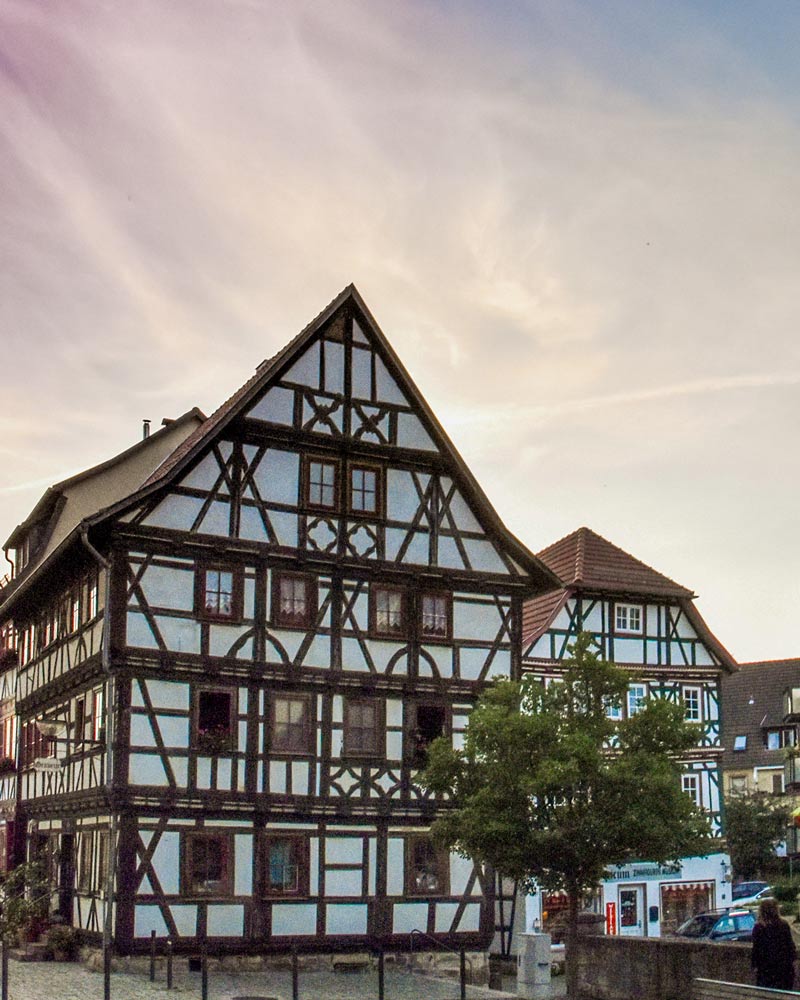
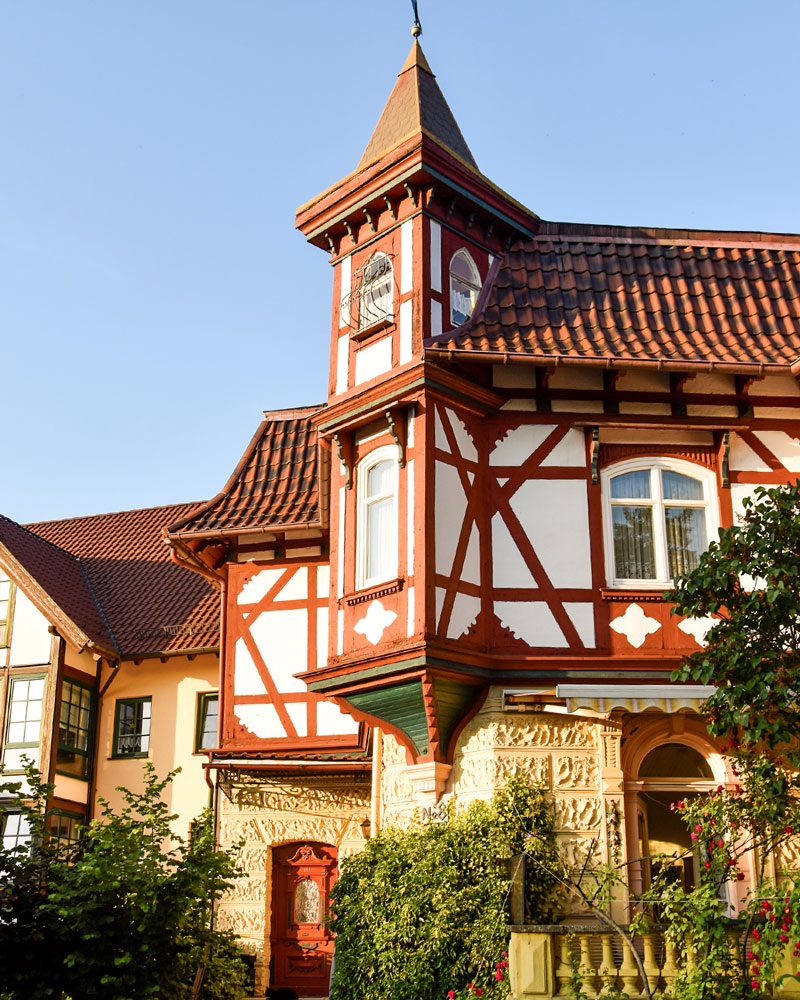
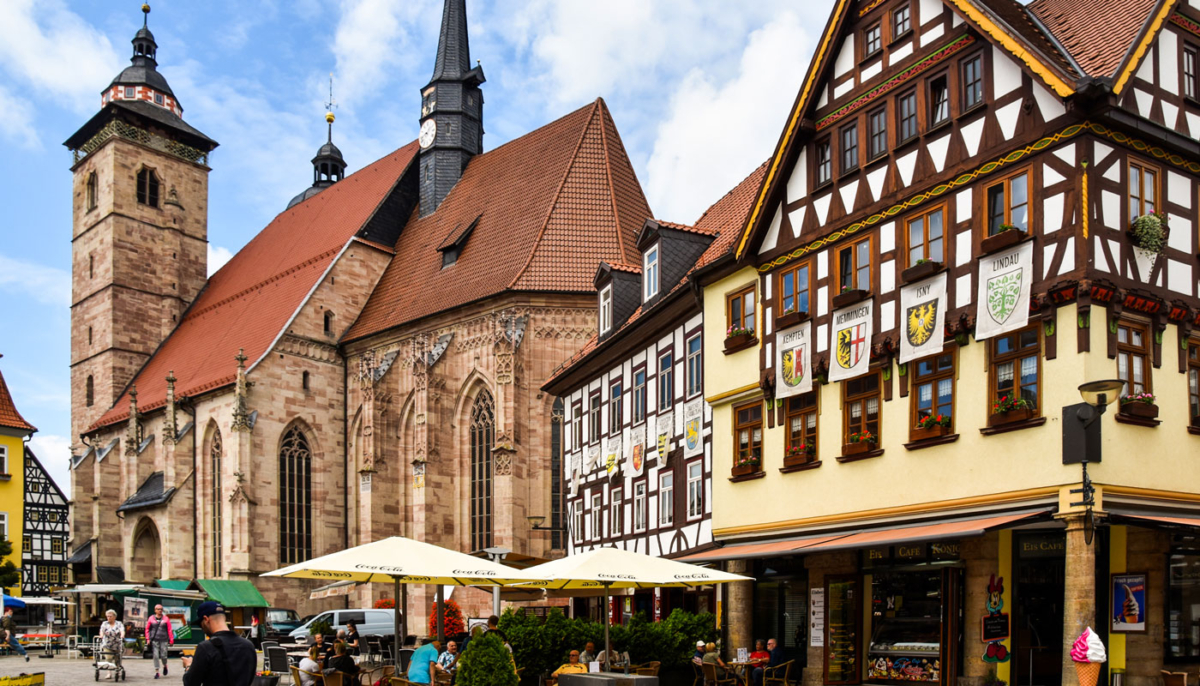
The beautifully maintained houses look particularly impressive at sunrise and sunset.
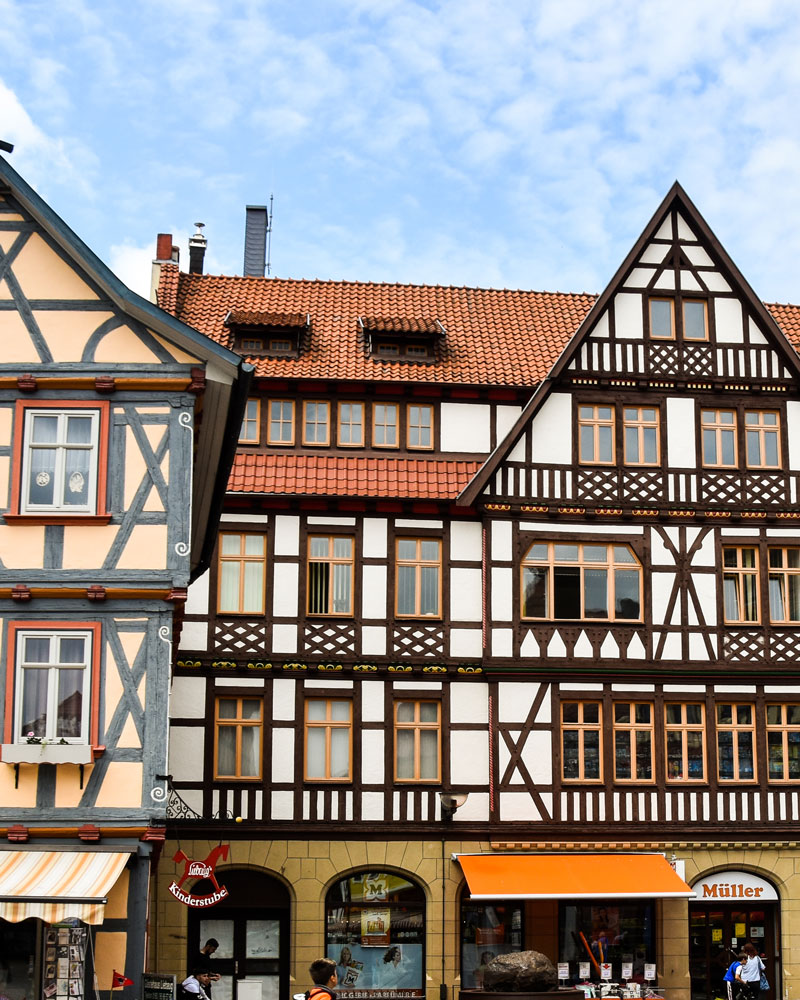
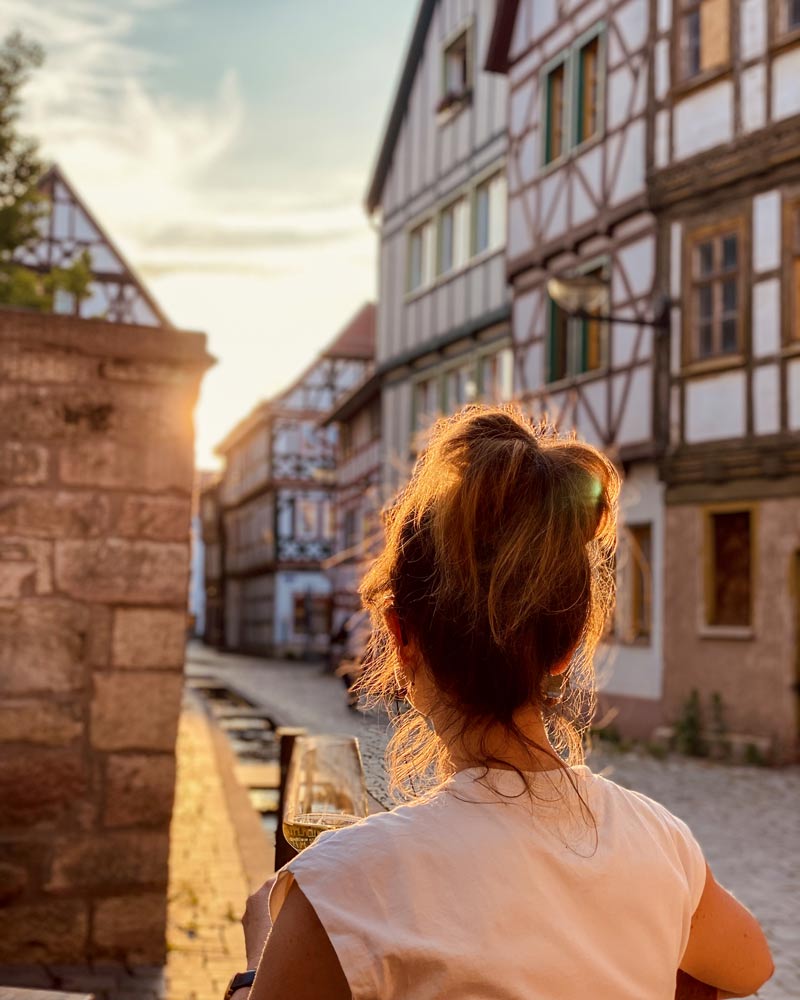
Take part in a historical city tour
Normally, we like to explore cities on our own, but this time it is highly recommended to take a guided city tour by Norbert Hospes (it's best to ask for him directly).
He doesn't just dress up in a historical costume - he played the local nougat revolutionary Willi Viebahn for us - but also shines with knowledge and anecdotes that are second to none.
Very entertaining, absolutely diverting, and best of all: you are immediately captivated by the complexity of the place. Or did you know what an "oven sow" is, what a "poop nose" looks like or where the term "stony rich" comes from?
Here you can find information about the city tour with Norbert Hospes.
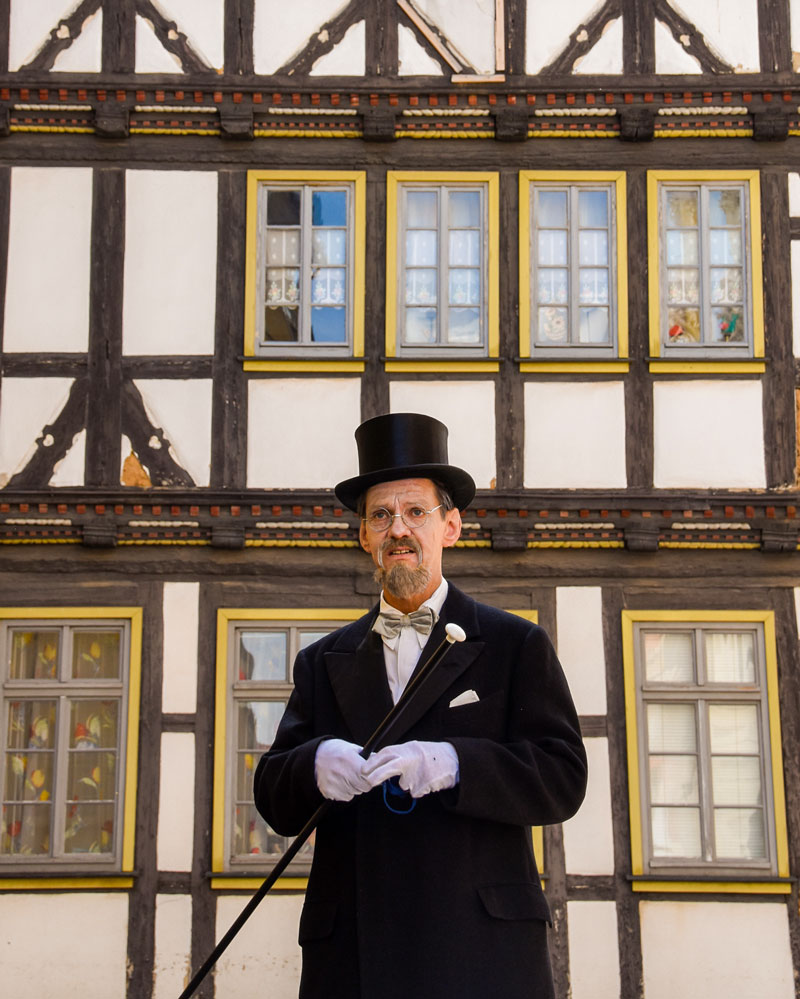
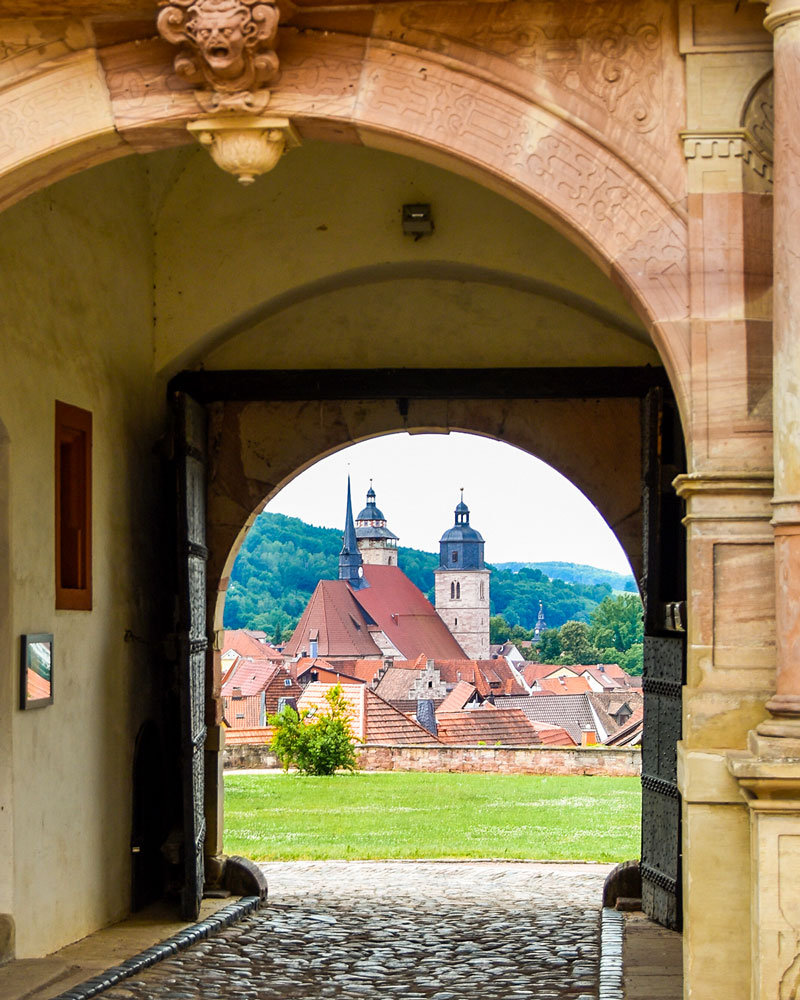
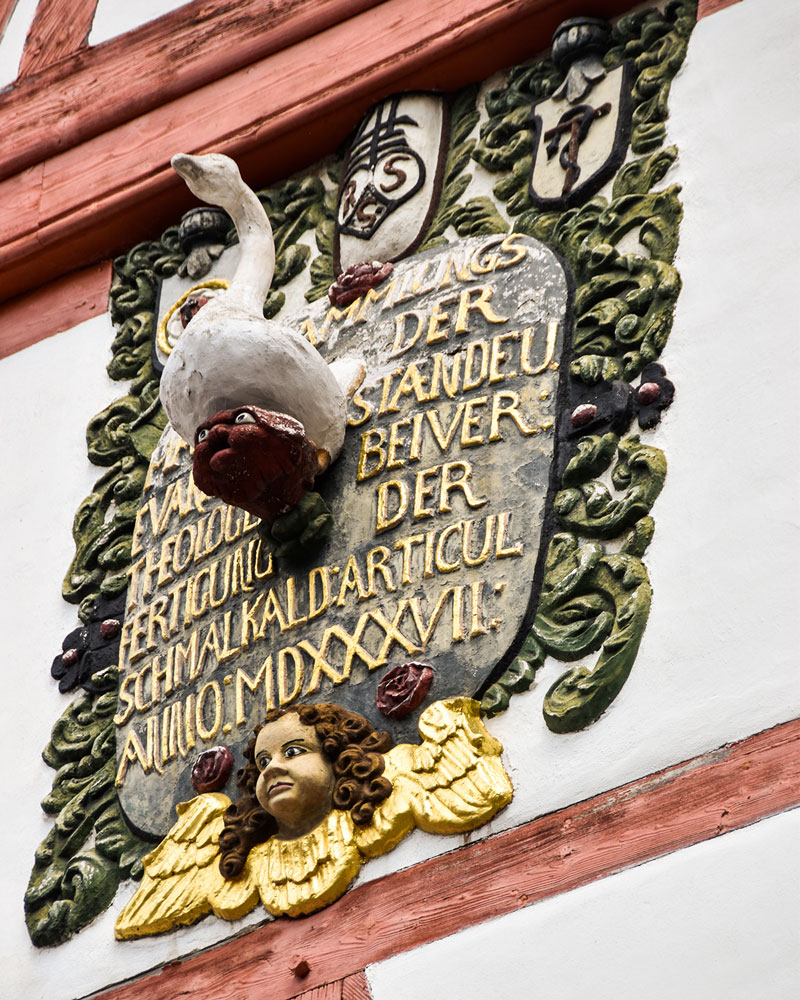
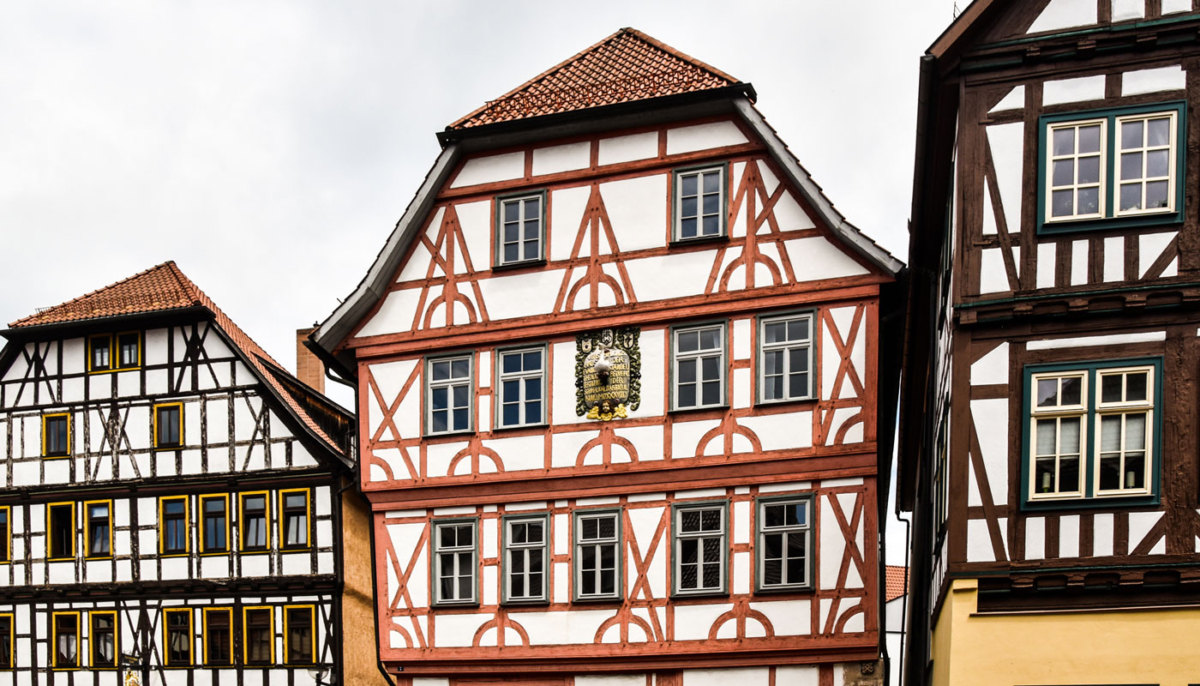
Admire Wilhelmsburg Castle
Just a few hundred meters from Schmalkalden's market square is the Schloss Wilhelmsburg, which overlooks the medieval town center.
The Renaissance lives and breathes here and almost everything is still in its original state. This is particularly noticeable in the Castle Museum, which has been put together with a noticeable amount of love and care and takes you through the entire building, through all the thoroughly restored rooms of the magnificent building.
Information about the castle can be found on the website (opening hours and tickets)
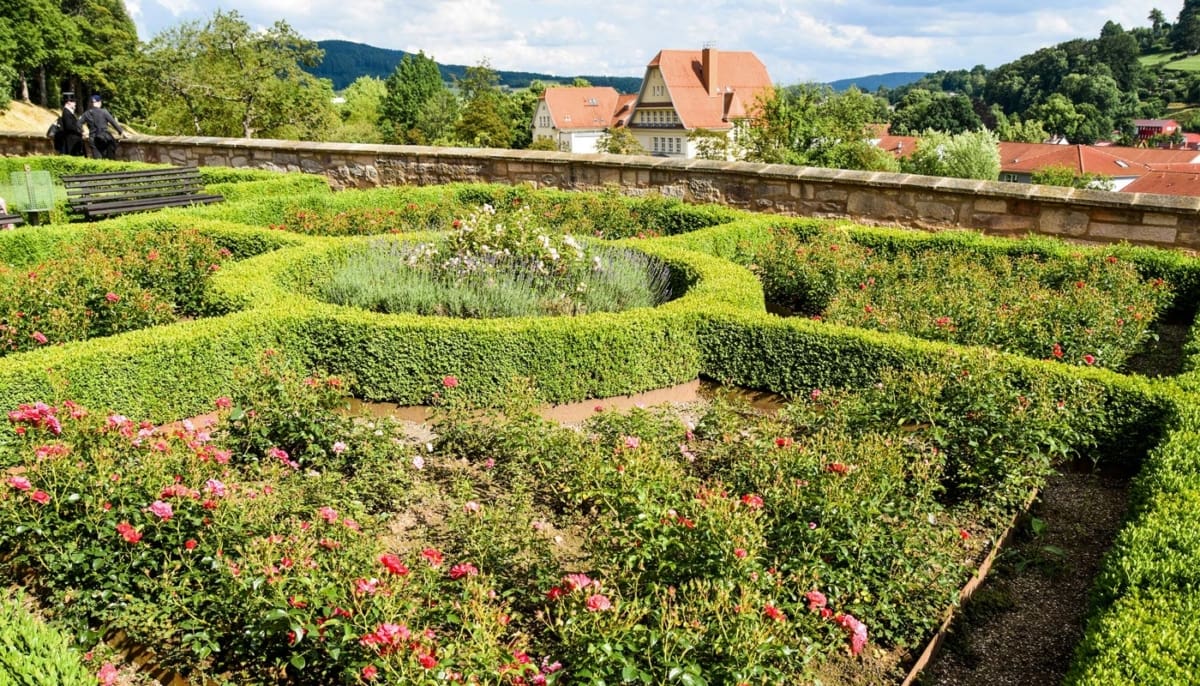
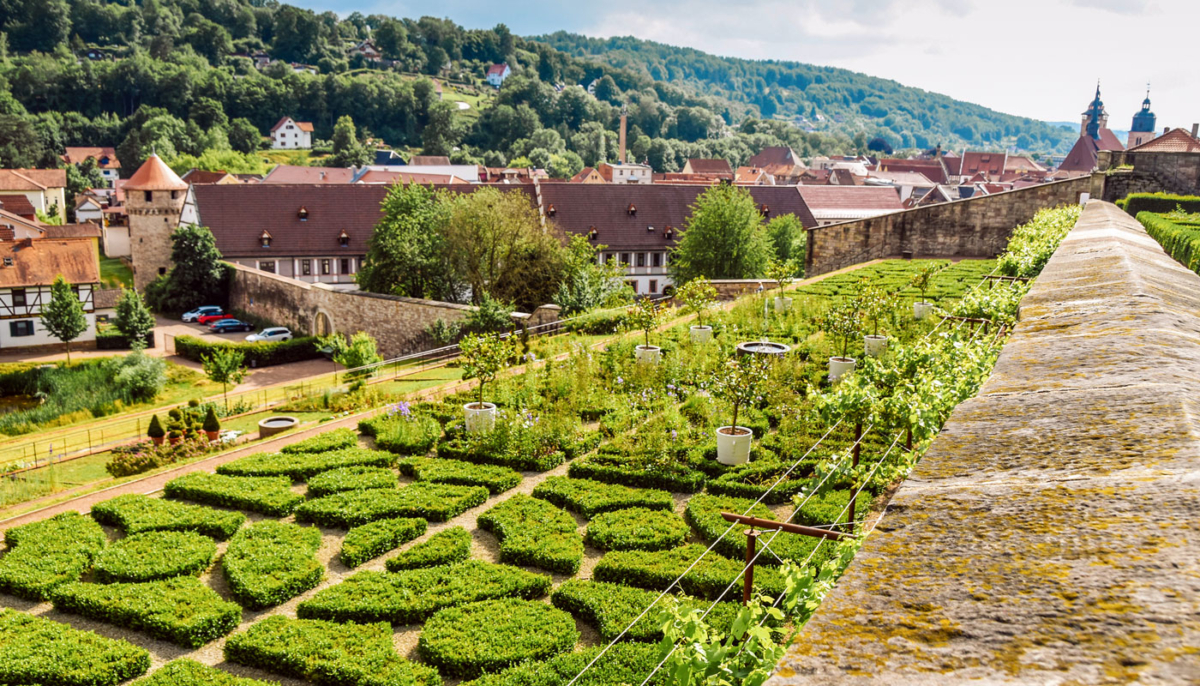
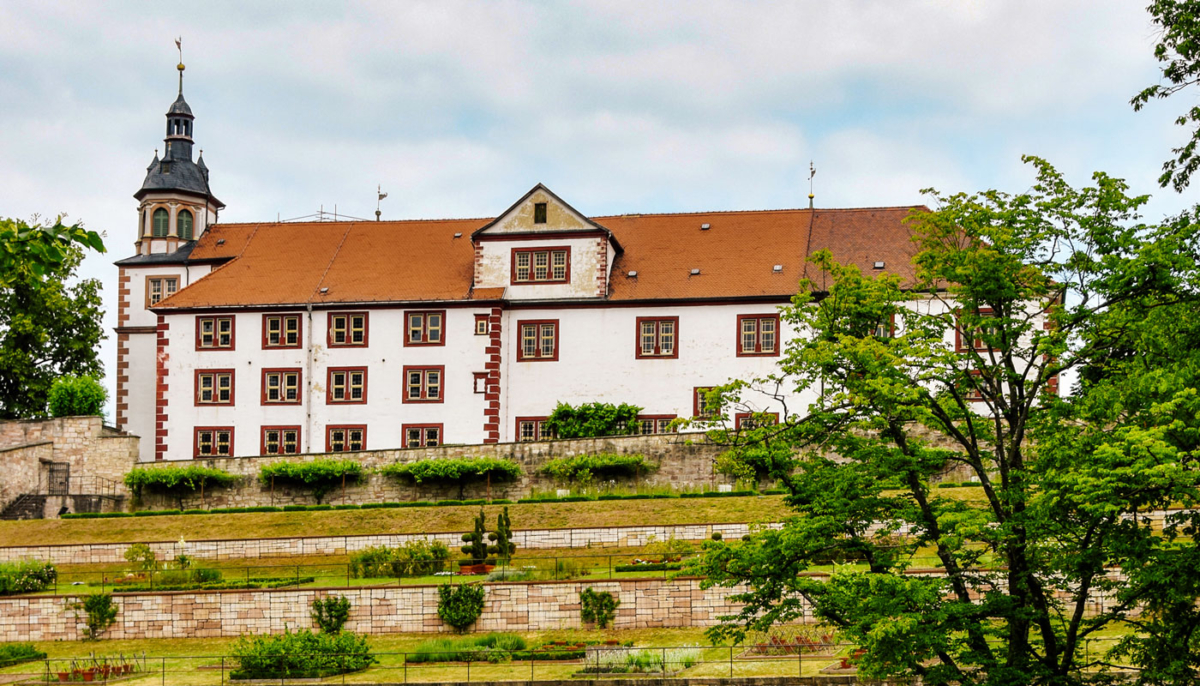
The museum also hosts rotating curated exhibitions of new artists. In our case, we were able to admire the sometimes abysmal, sometimes fantastic oil paintings by Berlin-based Vietnamese artist Nguyen Xuan Huy, which combine the ancient with the contemporary.
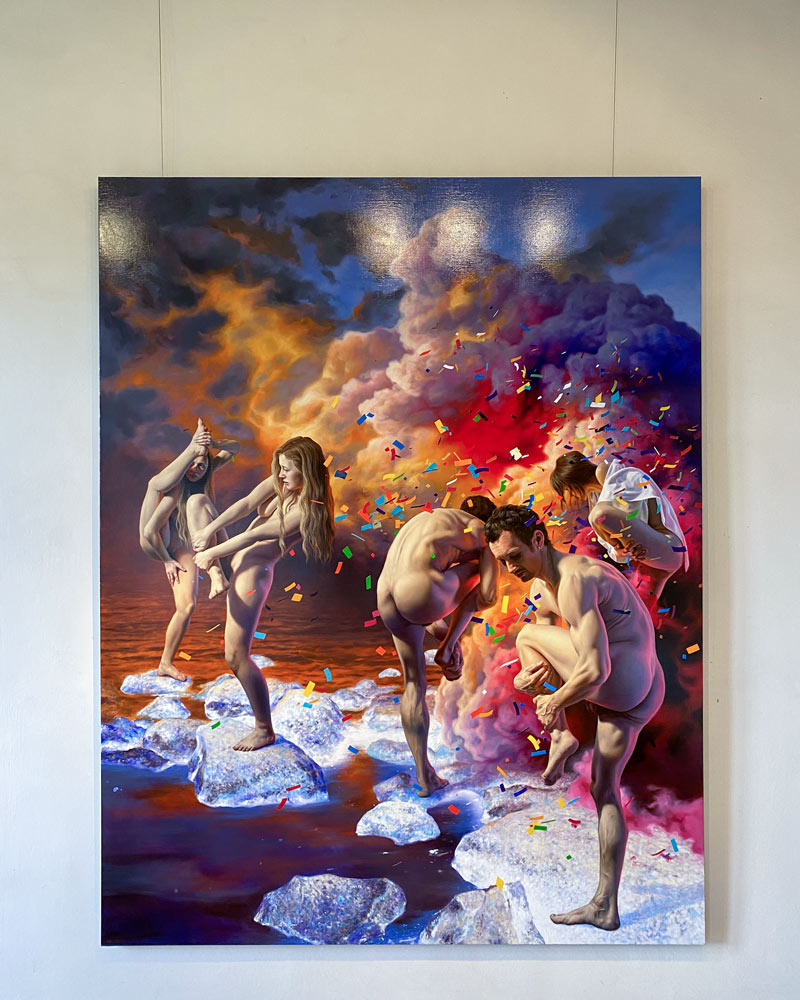
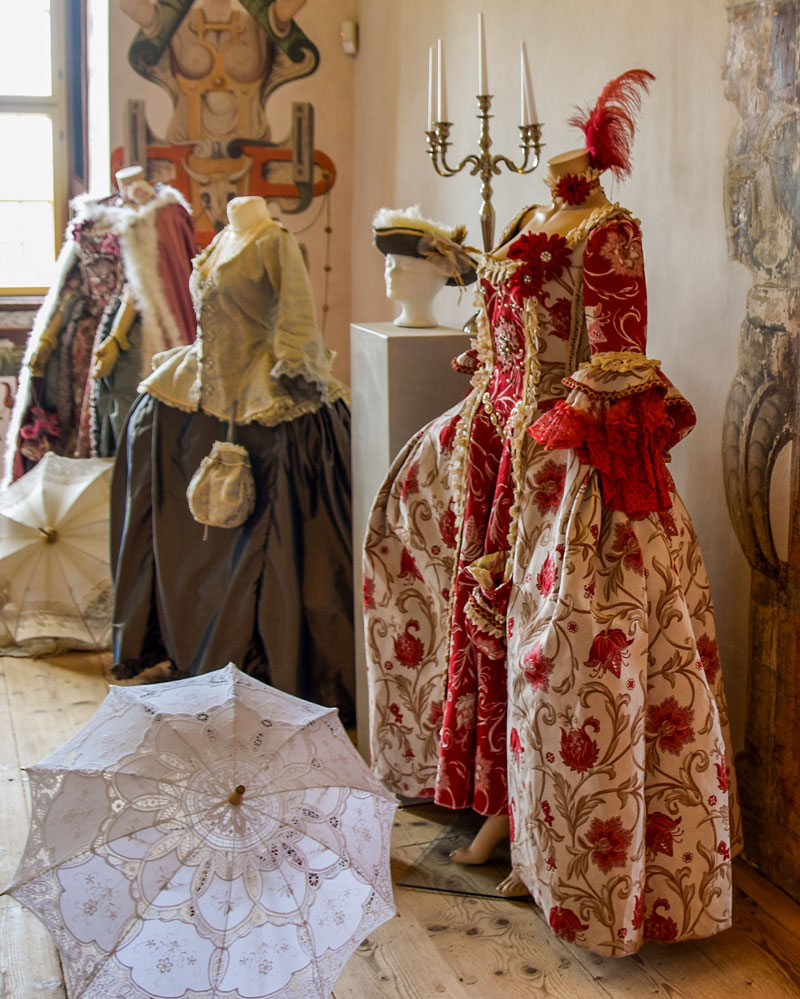
The castle church, which regularly hosts concerts, is particularly pretty. The center of attention: one of the oldest Renaissance organs in Central Europe that can still be played. We were lucky enough to see the organist preparing for the evening during our visit; it sounded amazing!
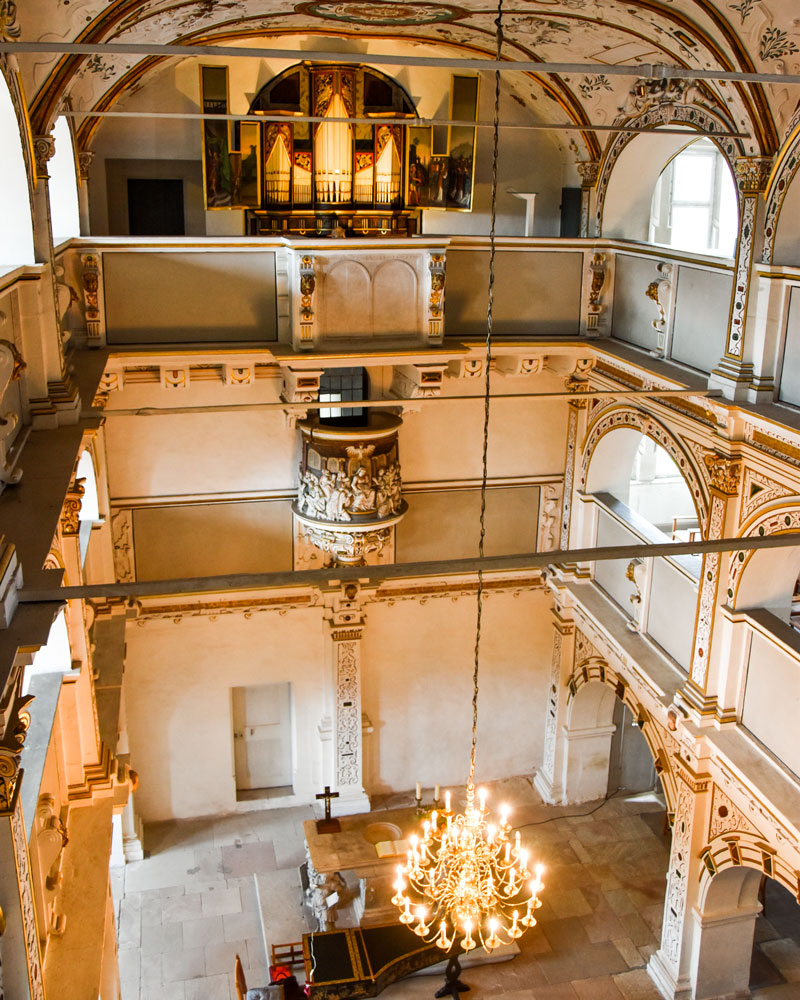
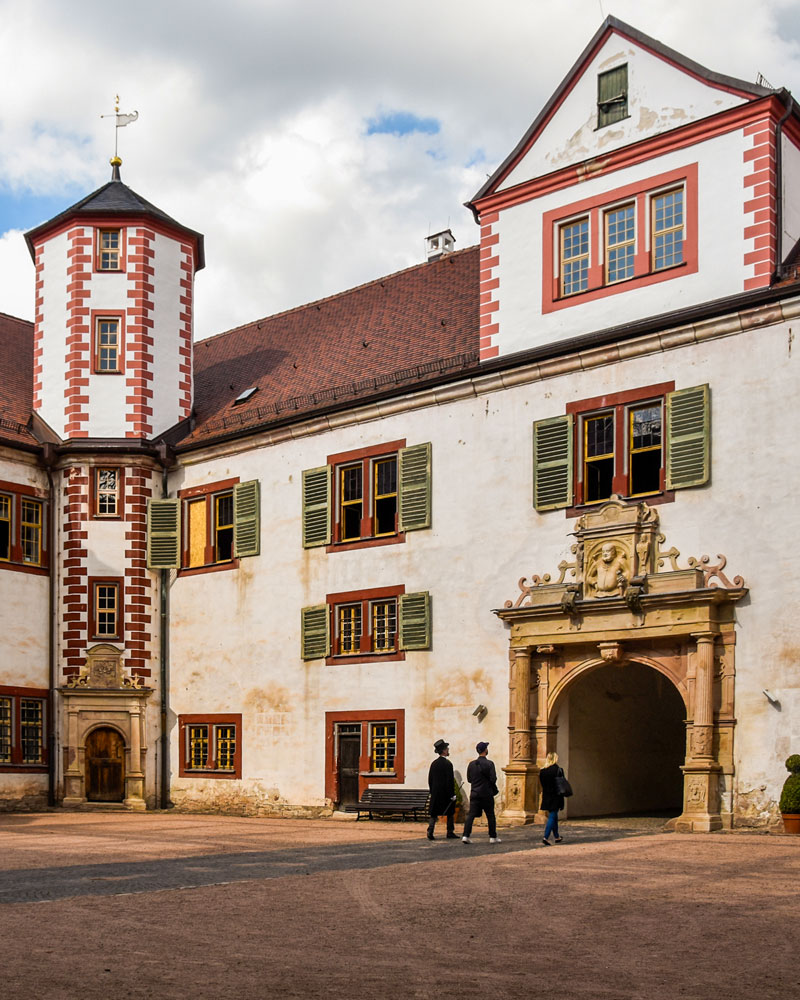
Trips in the surrounding area
The Thuringian Forest and the low mountain range around the city are ideally located in the immediate vicinity. There is also plenty to see here. There are many hiking trails to explore the region. We have picked out the following hike:
Hiking trail to the Ebertswiese mountain lake (Floh)
A magnificent circular hiking trail leads from the neighbouring village of Floh to the small, picturesque mountain lake Ebertswiese.
After crossing the Maßkopf, at an elevation of 590 metres, the 12-kilometre hiking trail continues through the dense fir forest, gradually ascending until the refreshing waters of the lake provide the necessary cooling.
After a dip in the lake, Kurti's Baude is a tempting place to stop for a bratwurst and a pint of beer before heading back downhill over mountains and meadows to Floh.
In addition to this somewhat challenging route, there are numerous other hiking trails through the region - it's best to find out more at the tourist centre or on the internet.
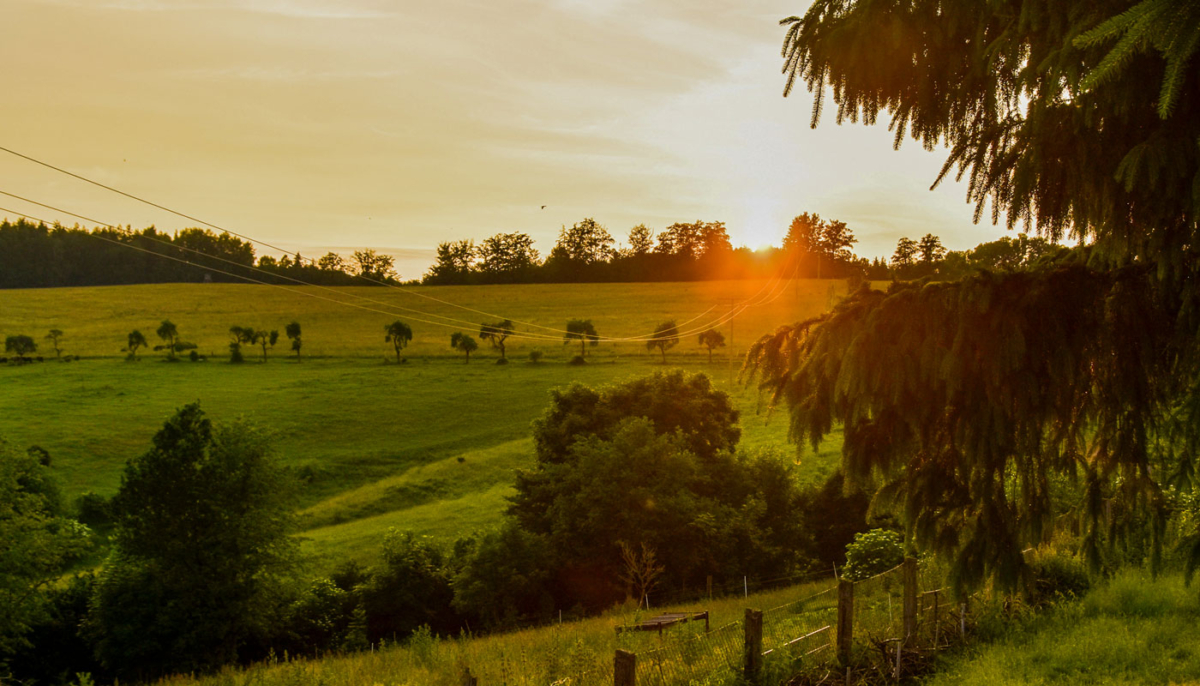
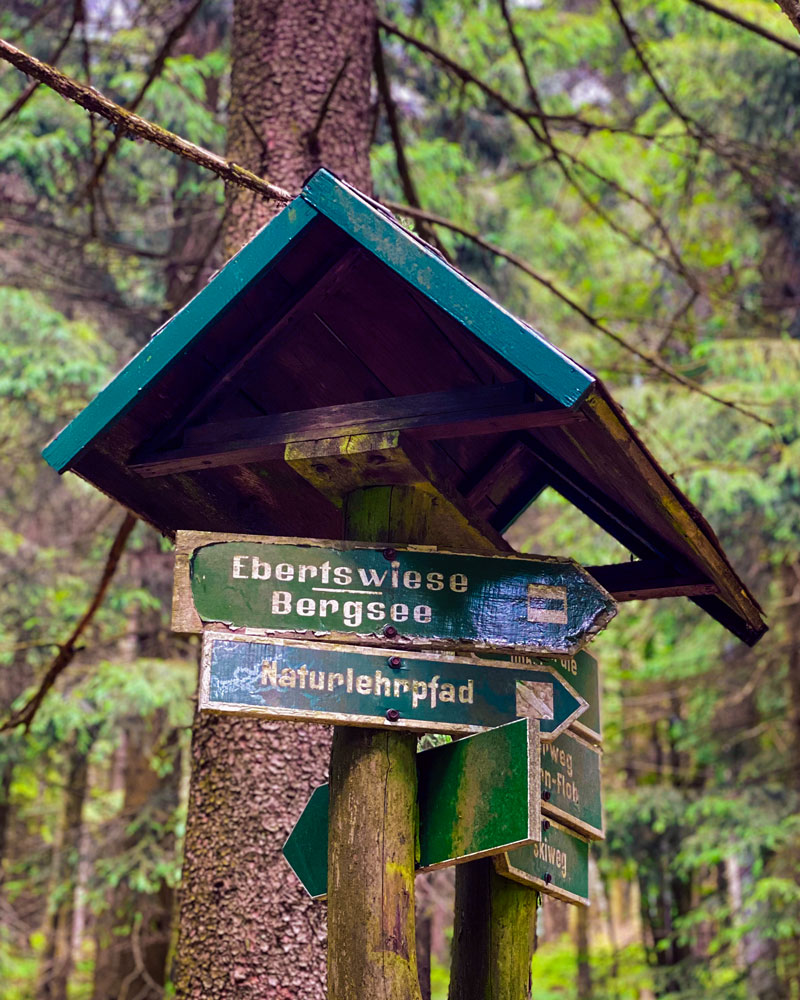
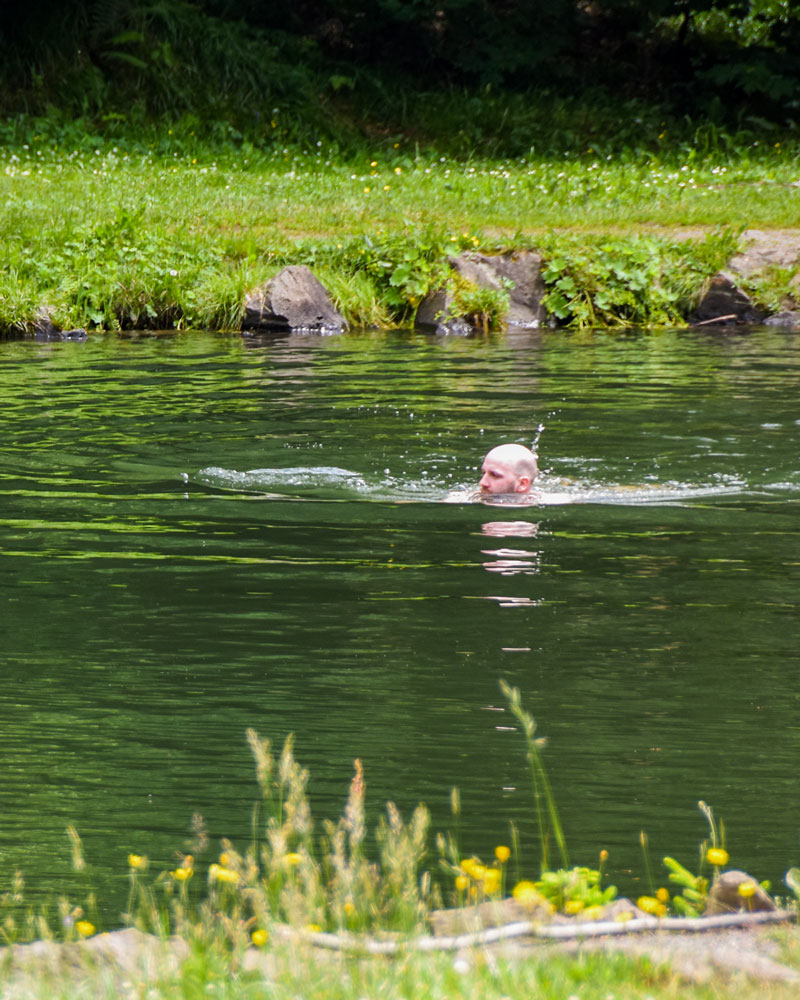
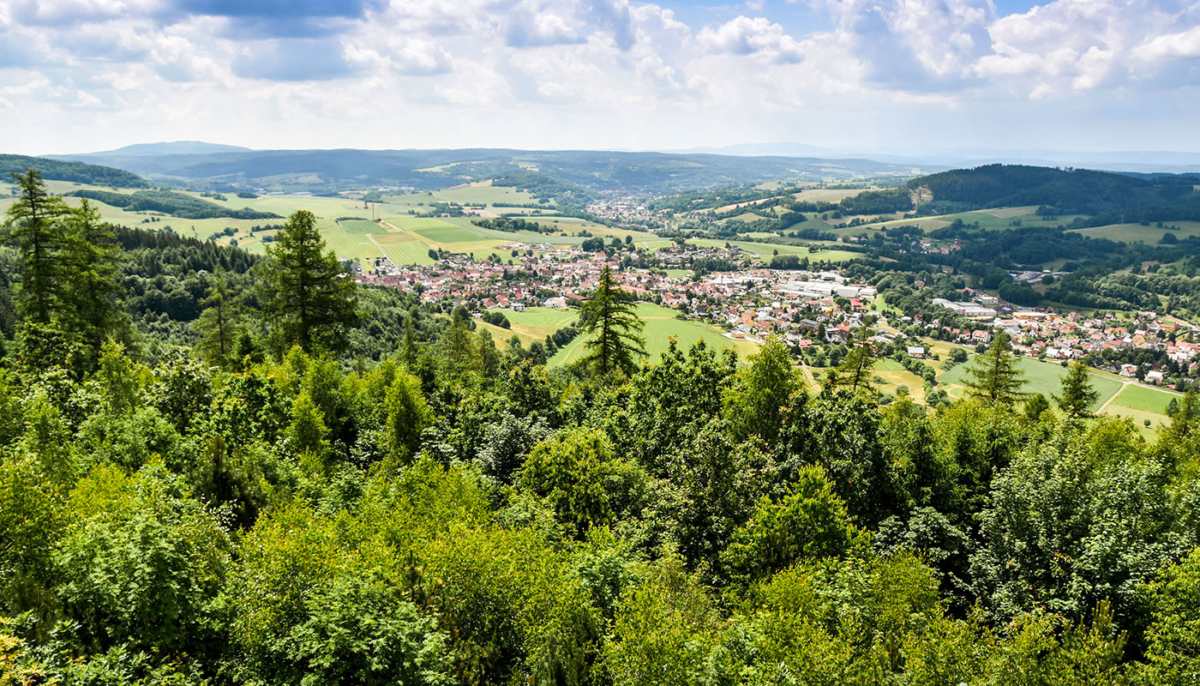
Finstertal Visitors' Mine
The former Finstertal iron ore mine is just a few minutes' drive from Schmalkalden.
It's not just the narrow, sometimes hair-raising corridors and tools that illustrate what a drudgery it was back then, real natural phenomena also delight the eye: for example, fluorescent rock can be found here using short-wave UV light. Unique in the world!
To the naked eye, it looks as if you are deep in space, but it is difficult to capture with a camera. Be sure to see it with your own eyes!
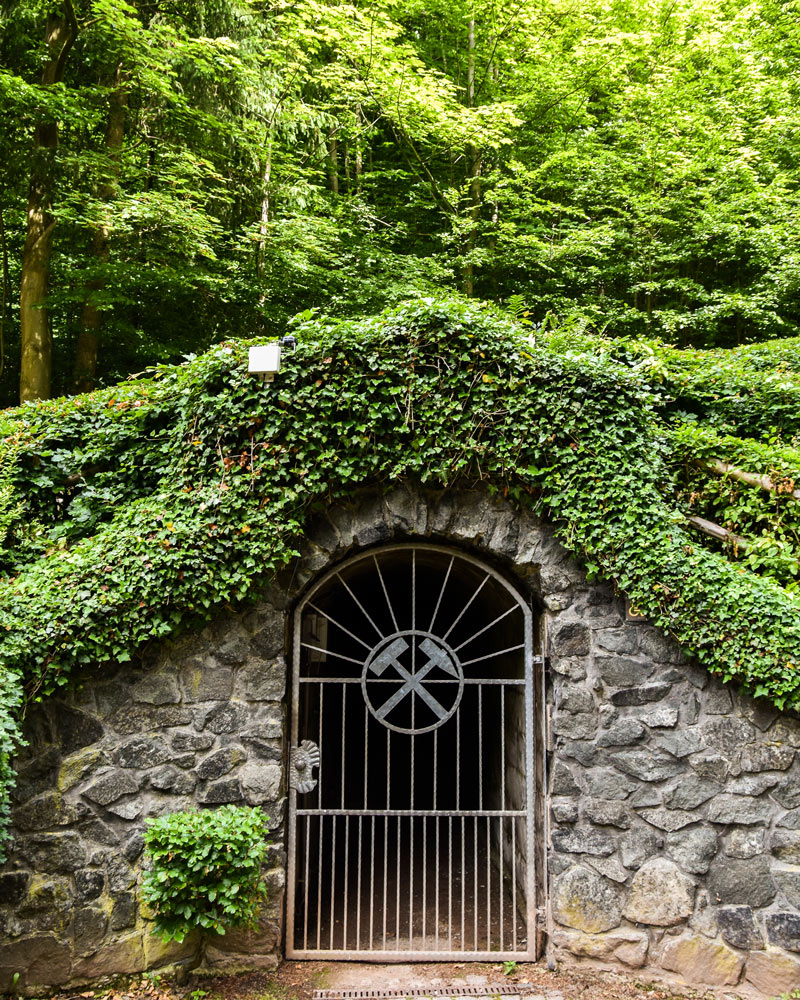
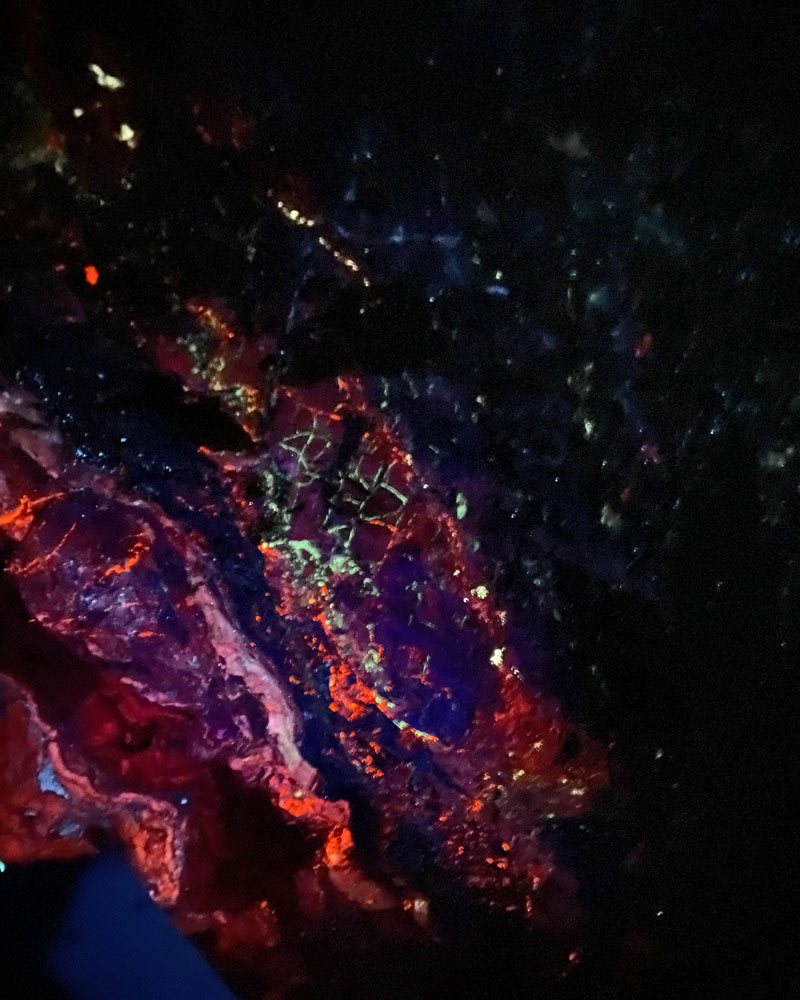
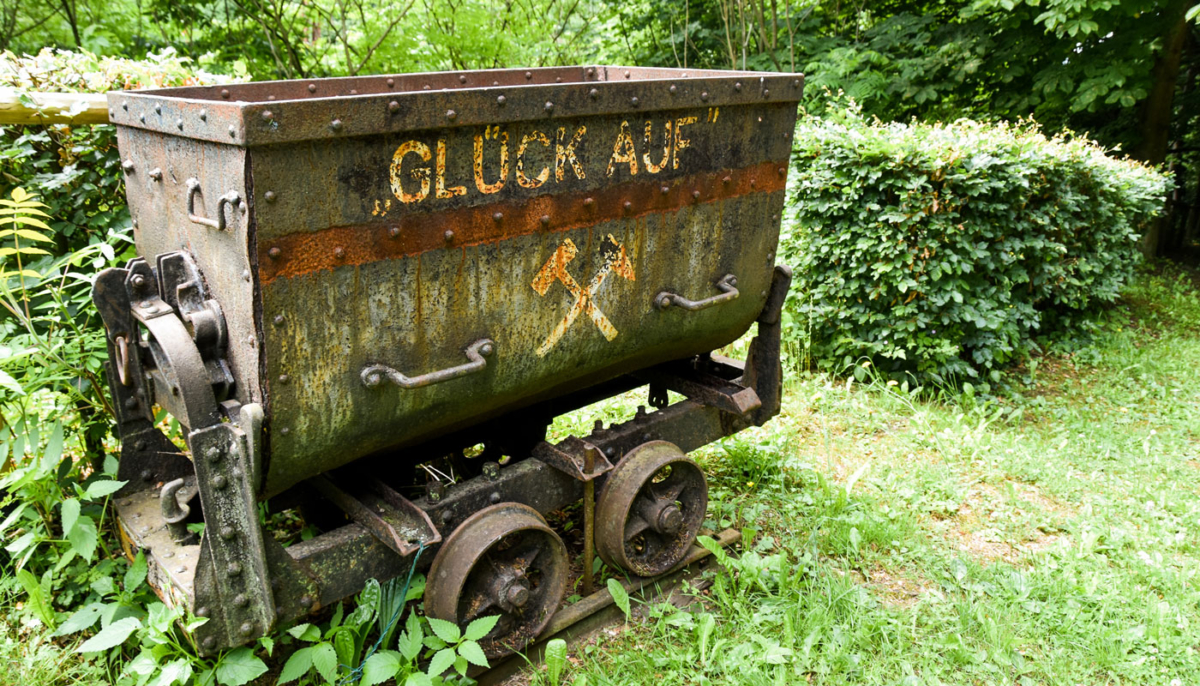
Blast furnace museum "Neue Hütte"
What was extracted from the iron ore mines around Schmalkalden was smelted in the ‘Neue Hütte’ blast furnace and became a real landmark of the town: the Schmalkalden tool.
The ‘VEB Werkzeugkombinat Schmalkalden’ was the most important tool manufacturer in the GDR, primarily because the iron ore mined here had an enormously high manganese content, which gave the iron a structure and strength reminiscent of steel.
The Blast Furnace Museum runs around the gigantic blast furnace - which took no less than four days to reach operating temperature - on several floors. You can find all the information about the Blast Furnace Museum here.
The museum is located just outside the town of Schmalkalden in the direction of Floh.
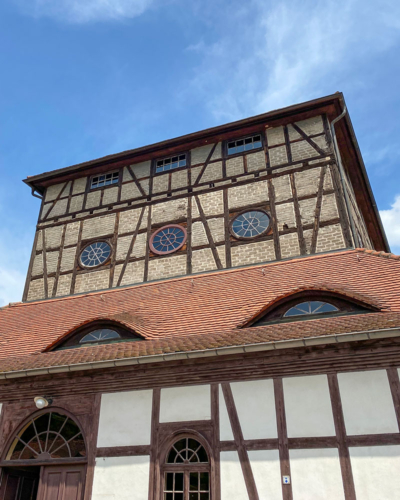
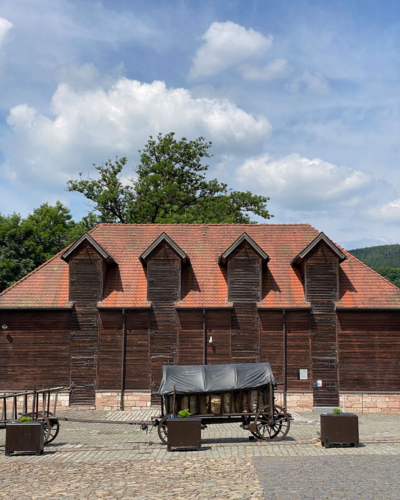
Wallenburg Castle in Trusetal
In the middle of a dense forest, around a quarter of an hour's drive north of Schmalkalden, you will find Wallenburg Castle.
Around 120 steps separate visitors from a magnificent view over the Thuringian Forest, while the Turmbaude at the foot of the tower tempts visitors with rustic dishes and Kreuzberg dark beer.
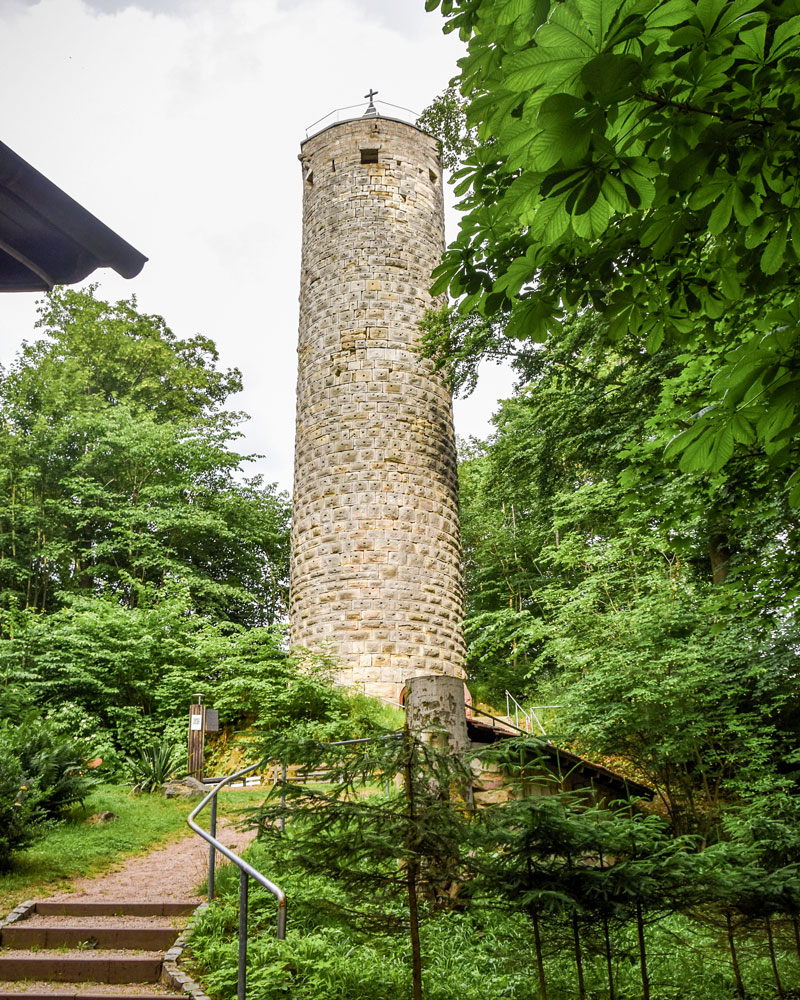
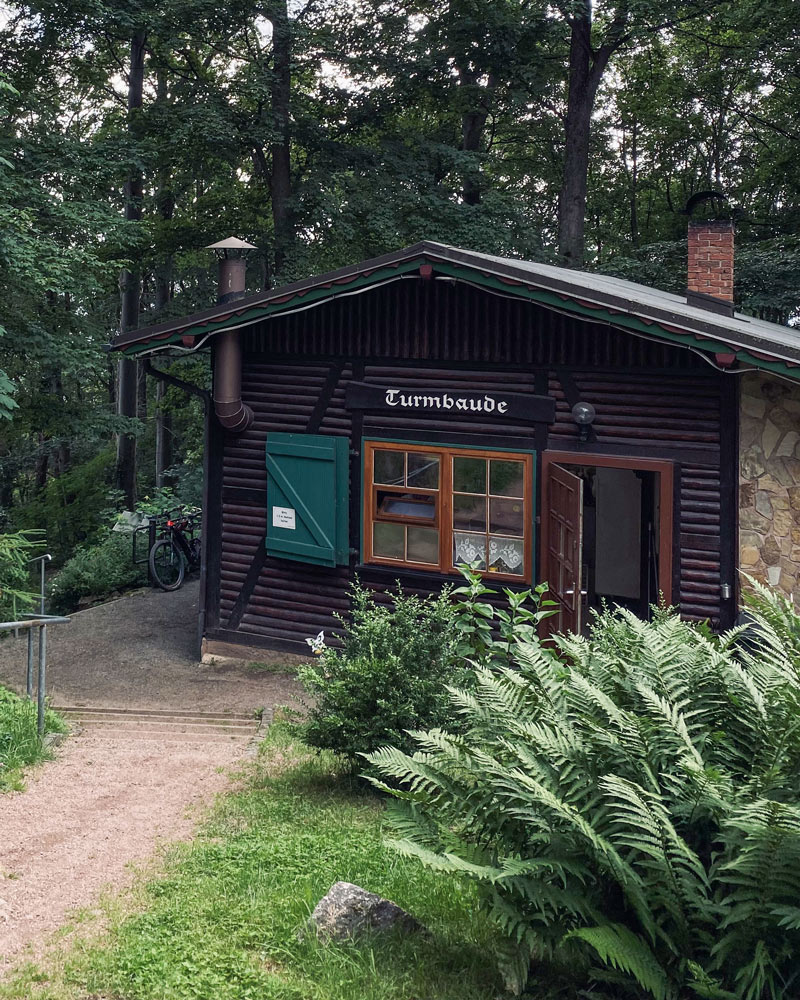
Culinary highlights: What to eat and drink
Thuringia stands for hearty, rustic cuisine, and Schmalkalden and the surrounding area are no slouch when it comes to home cooking. Here are a few tips.
1. The Thuringian grilled sausage (Thüringer Rostbratwurst )
The Thüringer Rostbratwurst is protected. According to an EU regulation, must be at least 15 centimeters long, medium-fine minced and tied up in a tight natural casing before it is placed raw or scalded on the charcoal or gas grill, but never in the pan.
What not many people know: The Thuringia Rennsteig is known in local circles as the "caraway equator". This means that caraway is added to Thuringia bratwurst to the north of it, but not to the south - where we were. Unfortunately, we weren't able to make a direct comparison, but we would like to say that we didn't miss the caraway.
Especially in summer, there are small bratwurst stands on every street corner - and with Thuringian BORN mustard, they taste more than delicious. For a sausage snack between meals - for example as a snack on a hike - I recommend the delicious thin and thick crackers from Fleischerei Pfannstiel, right by the market square. We've been there twice!
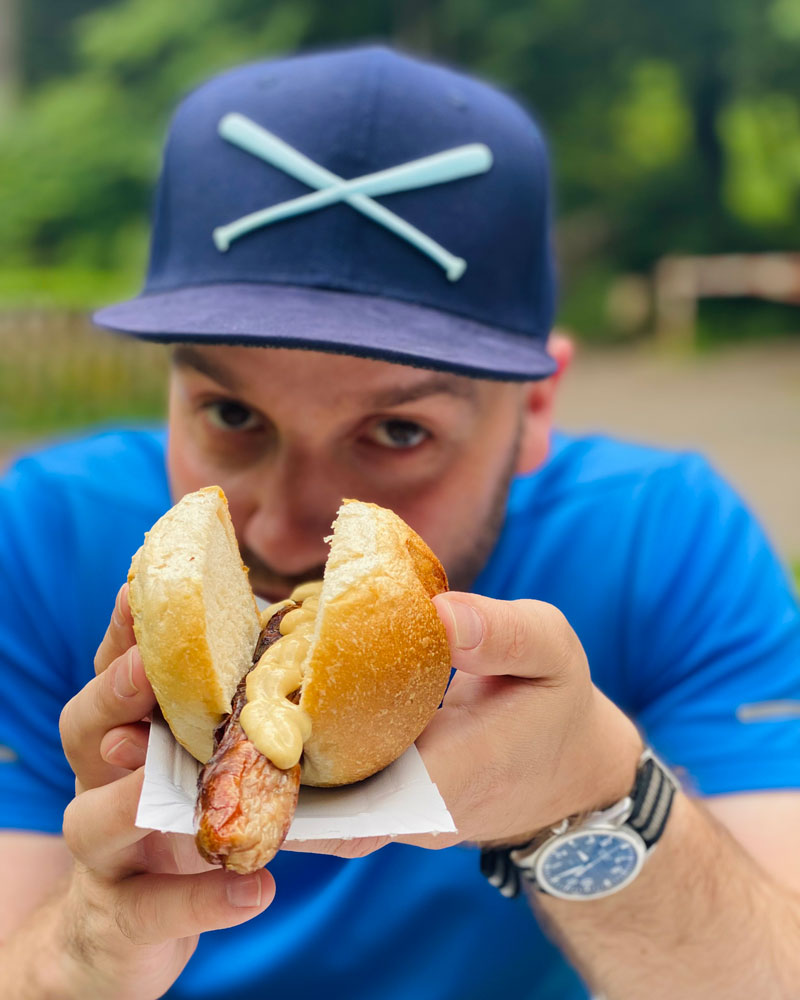
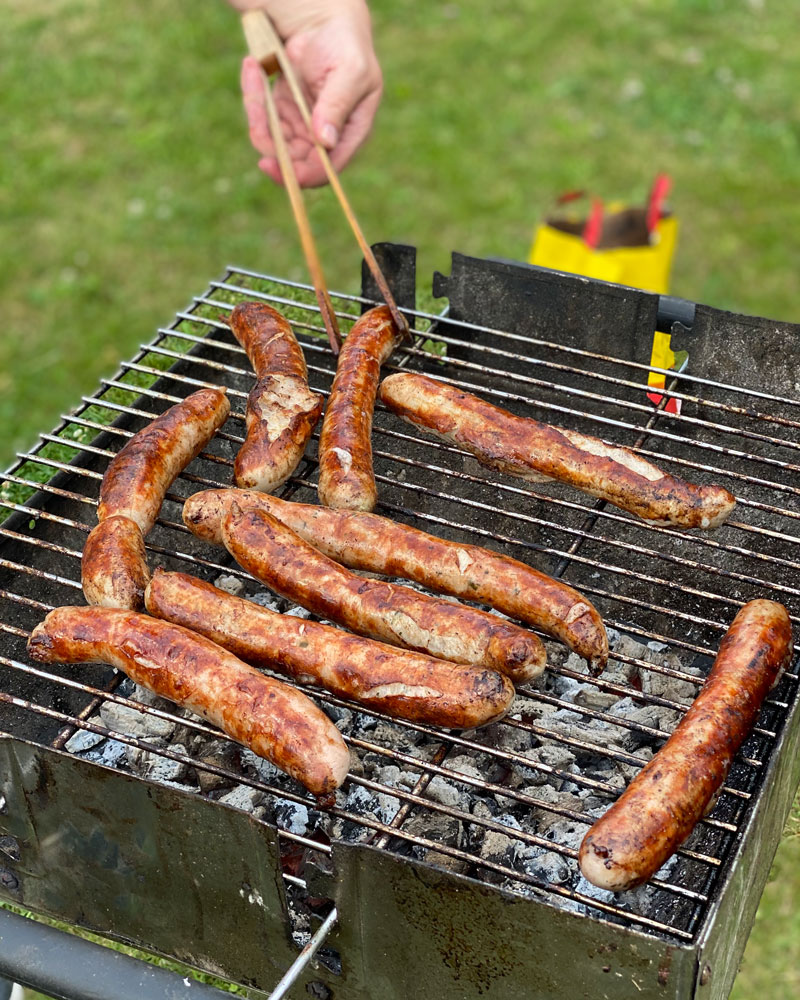
2. Dumplings, goulash, roasts & roulades
Thuringian hospitality and excellent dumplings - also known here as "Hütes" - can be found in the Schmalkaldener Ratskeller and the Gasthof Zum Kirchhof with a great view of the surrounding half-timbered architecture. The planet shines romantically between the buildings, especially at sunset.
If you are looking for a change without meat, we recommend MAYKEL'S. Vegetarians will also find their happiness here with tarte flambée and veggie burgers.
Outside of Schmalkalden, the Berggasthof Queste, the Teichhotel and the Waldhotel Ehrental, located in deep greenery, tempt visitors with delicious delicacies.
Further north - in Trusetal, not far from the Wallenburg - the Berggasthof und Pension Hohe Klinge probably offers the most fantastic view over the valley. The walk - and the reservation, without it nothing works - is worth it.
An important note regarding opening times: Unlike in expensive big cities, restaurants in this region close earlier than you might expect. The kitchen is often already cold at around 8 pm. It is therefore advisable to dine early.
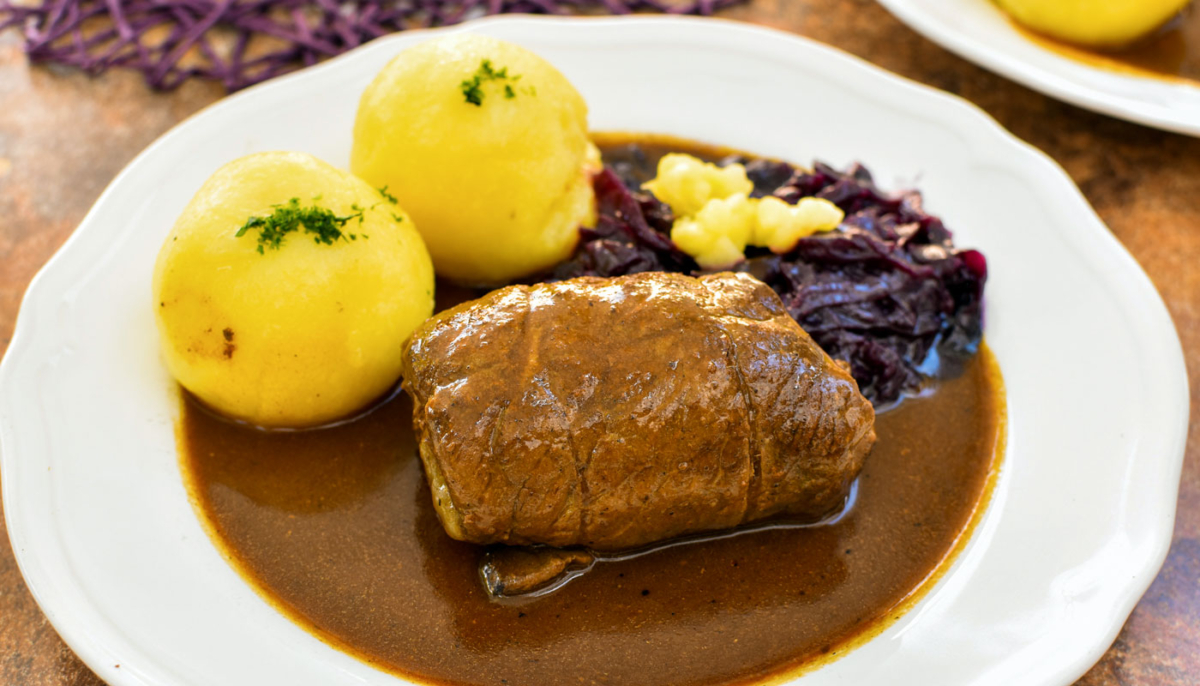
3. Sweets in the Viba nougat world
Especially fun with children: a visit to the Viba Nougat World. The world-famous nougat has been produced in the district of Schmalkalden-Meiningen since the 19th century.
Willi Viebahn and his sister Anna Reim started out with a coffee house in Schmalkalden. At that time, the nougat was still packaged in bars - until Viebahn had the idea of selling his nougat as round bars during a conversation with a cigar manufacturer. This brought success, and since then Schmalkalden and nougat have been inseparable.
You can see and taste more about the history and, of course, numerous samples of the famous nougat in the Viba Nougat World. A short tour of the museum on the second floor is also worthwhile.
You can find more information about the visit on the website.
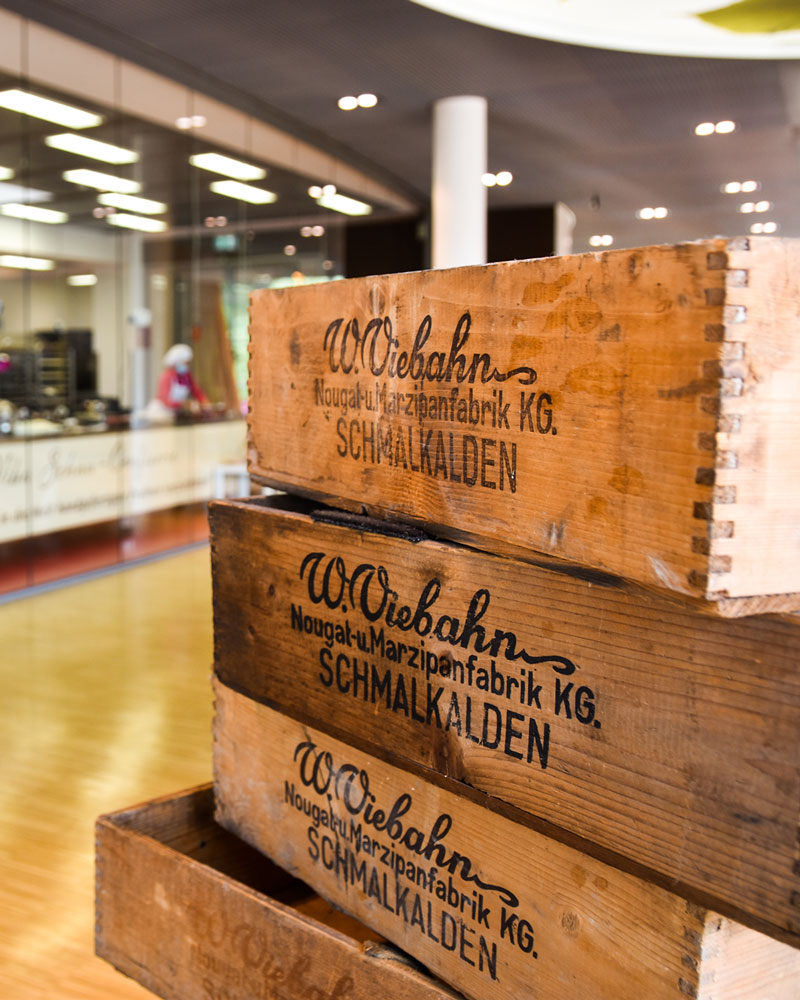
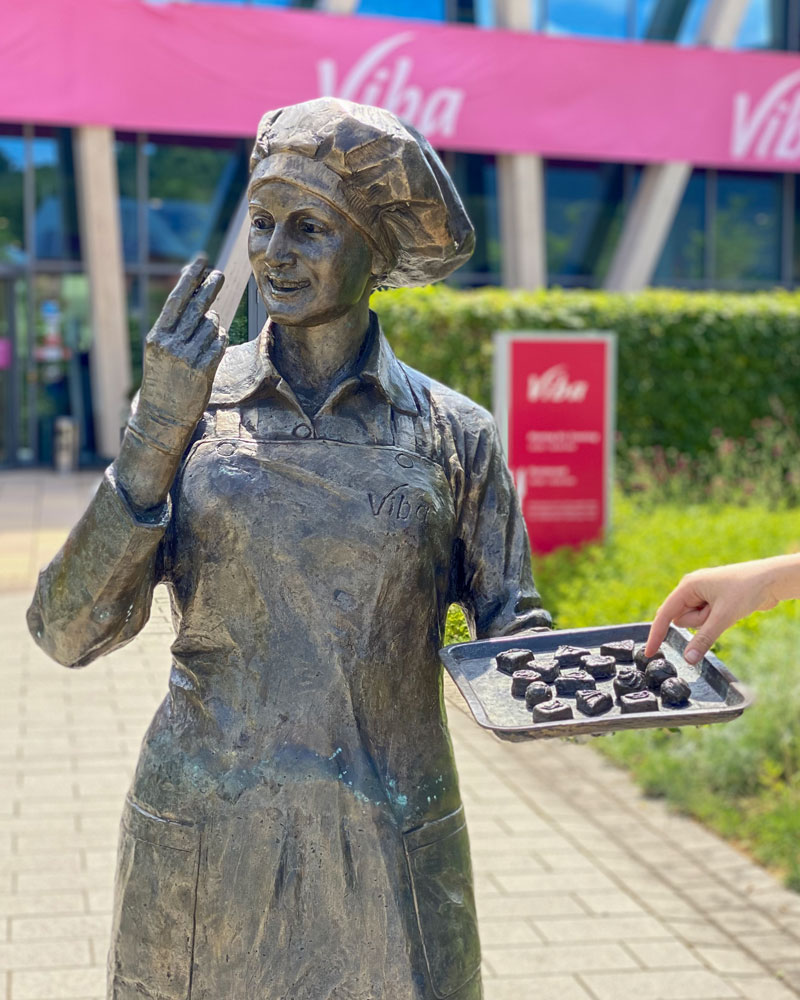
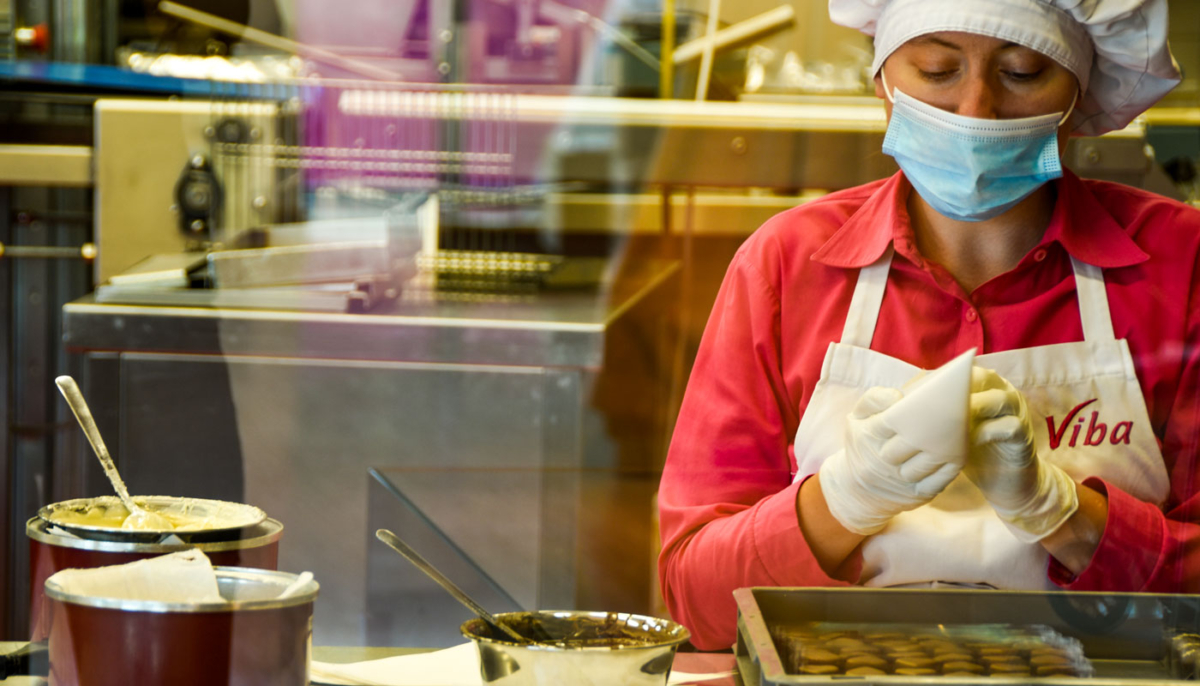
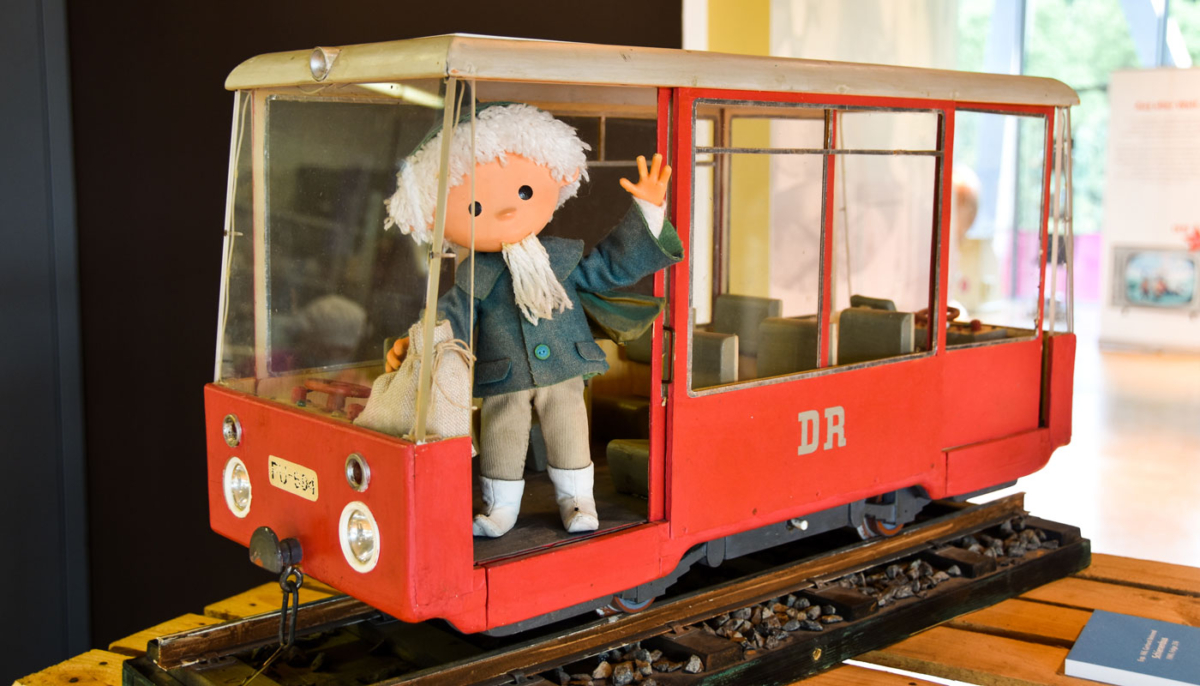
Conclusion: Is Schmalkalden-Meiningen worth a visit?
Let me put it this way: when we were in town, the annual Schmalkalden wine festival was taking place. Late at night, a somewhat drunk but extremely cheerful wine lover approached us and shouted into the night sky: ‘I love my East - I love Schmalkalden!’ - We couldn't have put it any better. So it's worth adding this magnificent Thuringian region to your list of travel destinations.
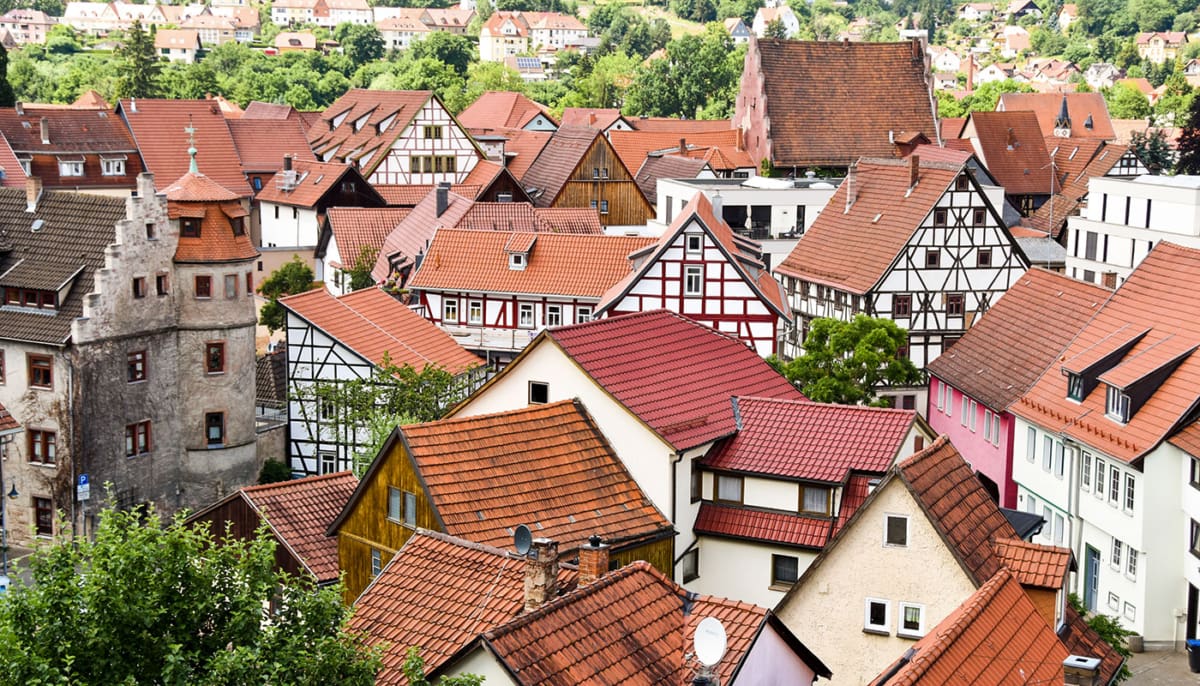
Frequently asked questions
IWhat is the best time to visit the Schmalkalden-Meiningen region?
Every season has its advantages: I recommend the summer months and early autumn for hiking. The Schmalkalden town festival also takes place every last weekend in August – a festival with a long tradition. In winter, winter sports enthusiasts get their money’s worth.
Traveling by train can prove to be quite challenging, particularly given the reduced flexibility available on-site. We suggest taking a car when traveling.
I also recommend the car here. We saw a lot of cyclists. If you like sports and don’t mind the low mountains, and you have enough time, you can try it out.
We have focussed exclusively on the town of Schmalkalden and the surrounding area. If you want to visit all the places I’ve mentioned, you should plan to stay two to three nights. If you have more time, I recommend that you also visit the towns of Oberhof or Meiningen, which are well worth seeing.
We stayed at the Hotel Grünes Tor, a pretty half-timbered hotel with a small but excellent breakfast.
I hope you enjoyed this article and that it helped answer your questions. If you have any ideas or questions, we look forward to your comments here on the travel blog.
If you don't have any questions: We still look forward to your feedback and that you share the article with friends or save it on Pinterest. Then you can find the tips again later.
Follow me on Facebook, Instagram, Pinterest and Threads or subscribe to my newsletter for regular updates (currently only in German).
☕️ Blogging costs time and money. Would you like to appreciate our work so that we can continue to share our tips with you as experts? We would appreciate a tip in our virtual coffee fund at PayPal → VIEL UNTERWEGS Coffee Box. Thanks to you, we can put our passion and heart and soul into this blog.
Transparency and trust: There are referral links (affiliate links) in this article. This means no additional costs for you. But: If you buy something via a link, I will receive a small commission. You don't incur any additional costs, but you help me to run this site and support the blog and my free information and expert tips for you! Thank you very much!

Hi ich bin Katrin!
I'm Katrin, I travel a lot and am a real travel expert! I am eager to explore the whole world with a Camper van or backpack. Furthermore, I founded this travel blog to share my experiences with you!
